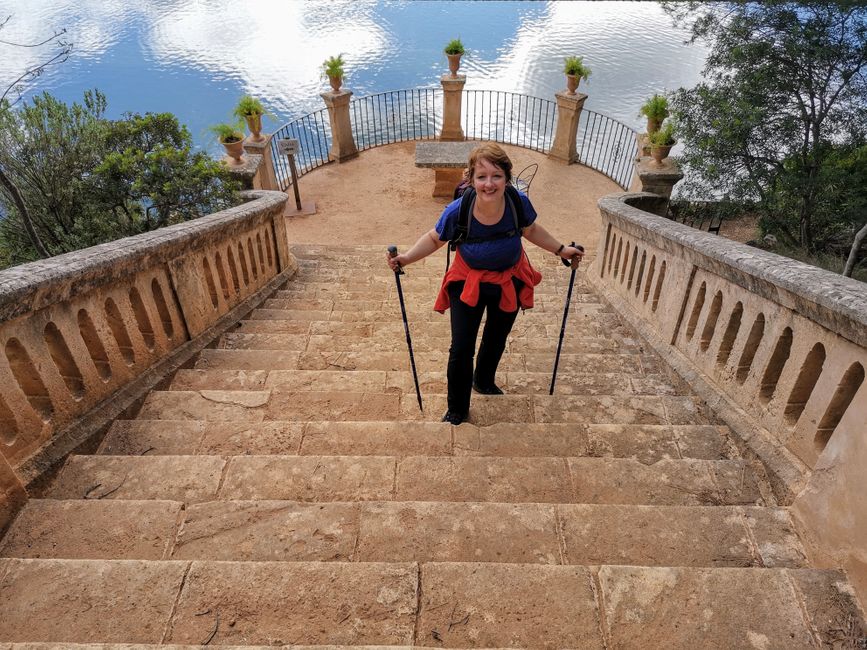Day 3, April 22nd, 2021: Kyanjuki and Kilembe in the Kasese district - visiting the Divine Mercy Primary School & the YVCO Bulembia Child Development Center
ꯐꯣꯉꯈ꯭ꯔꯦ꯫: 25.04.2021
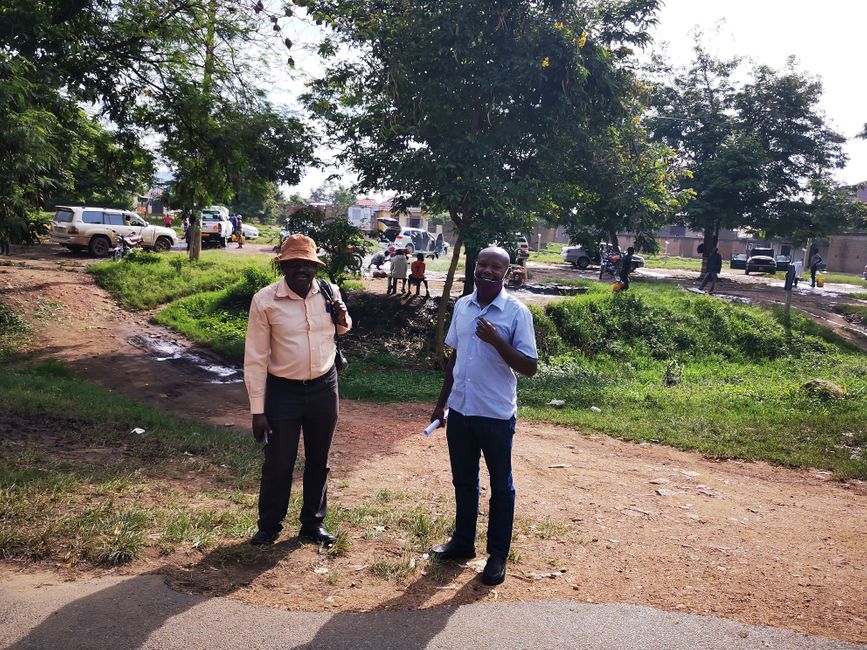
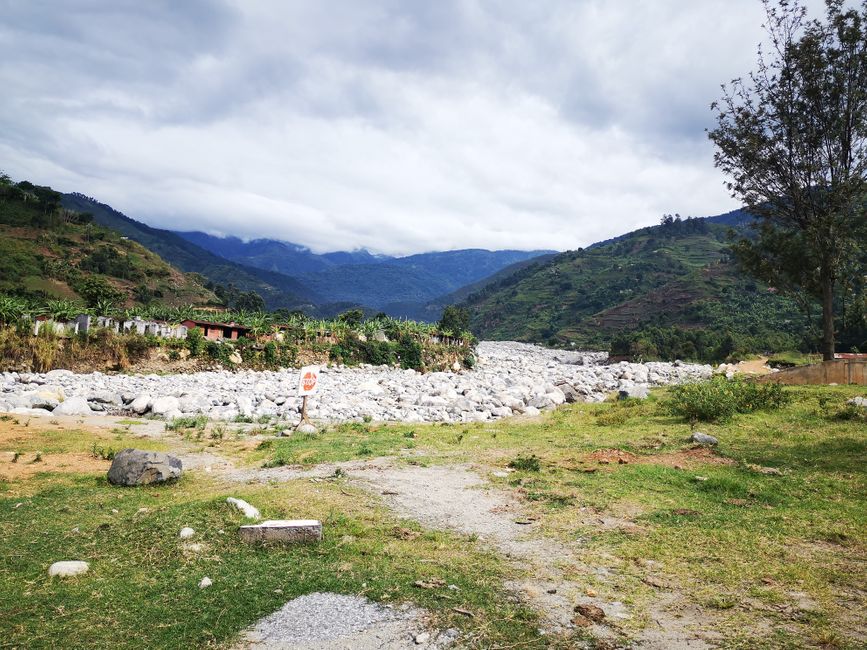
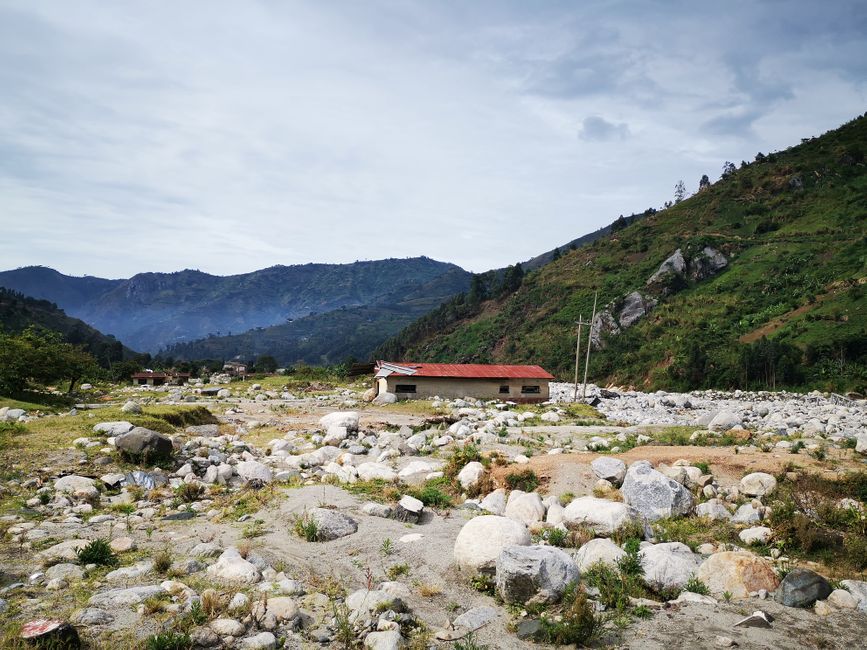
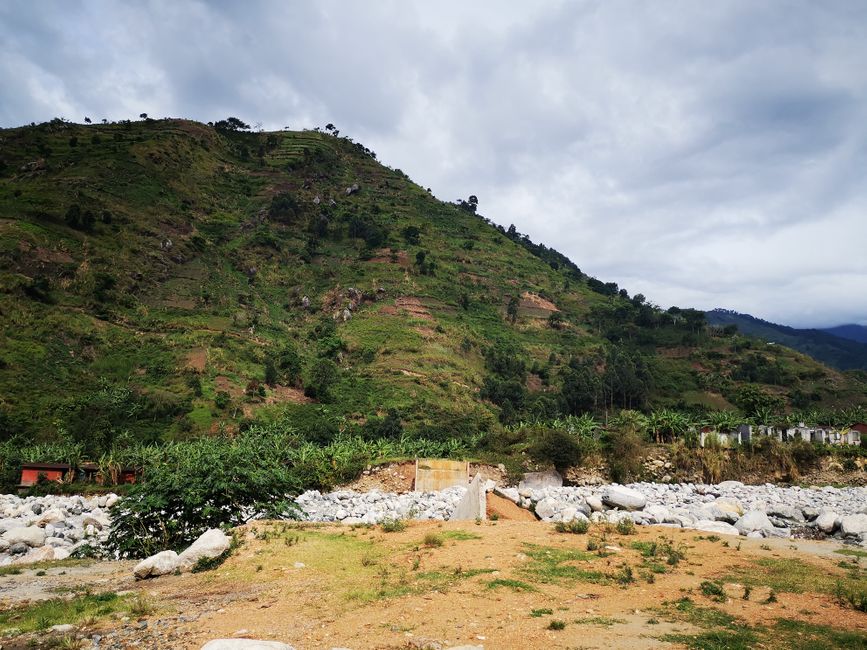
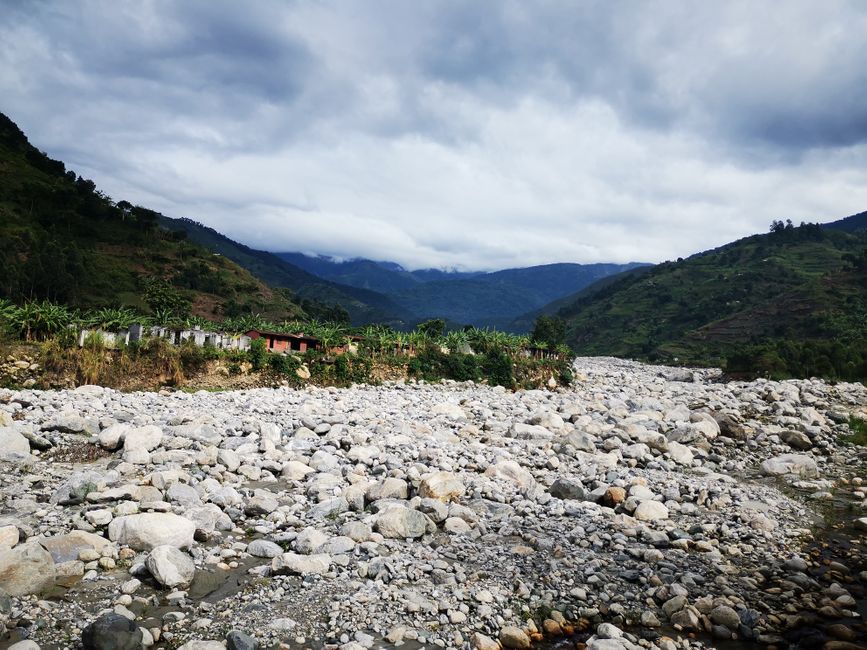
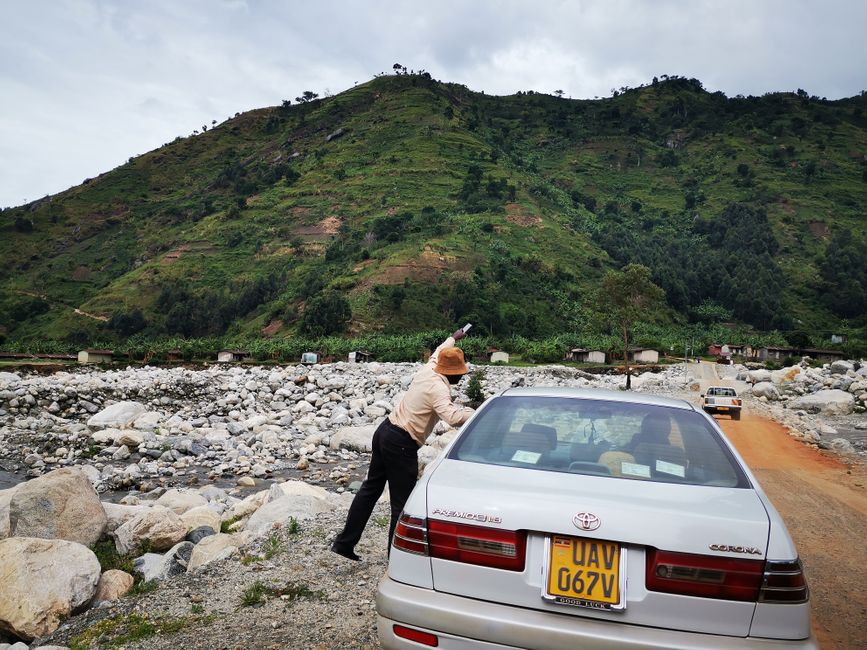
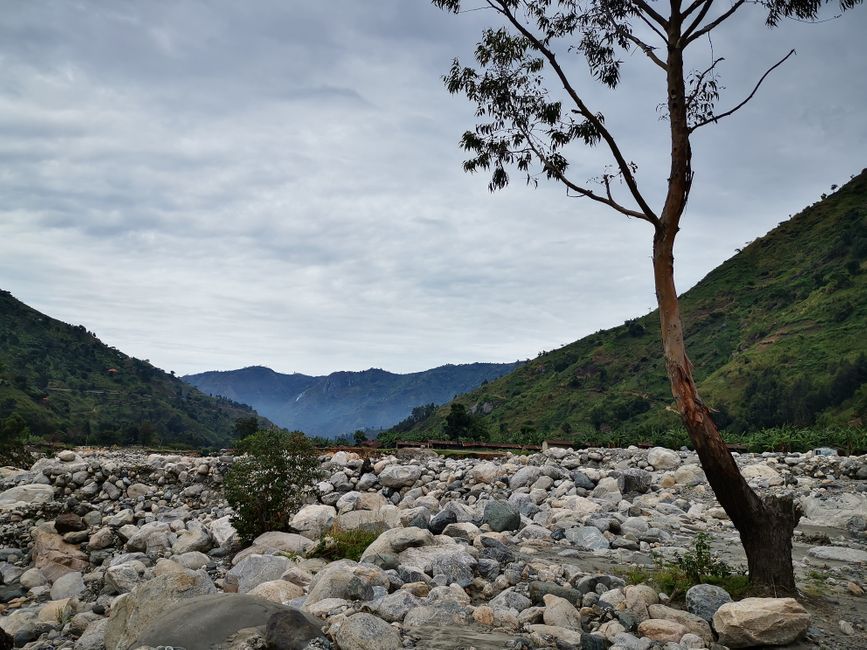
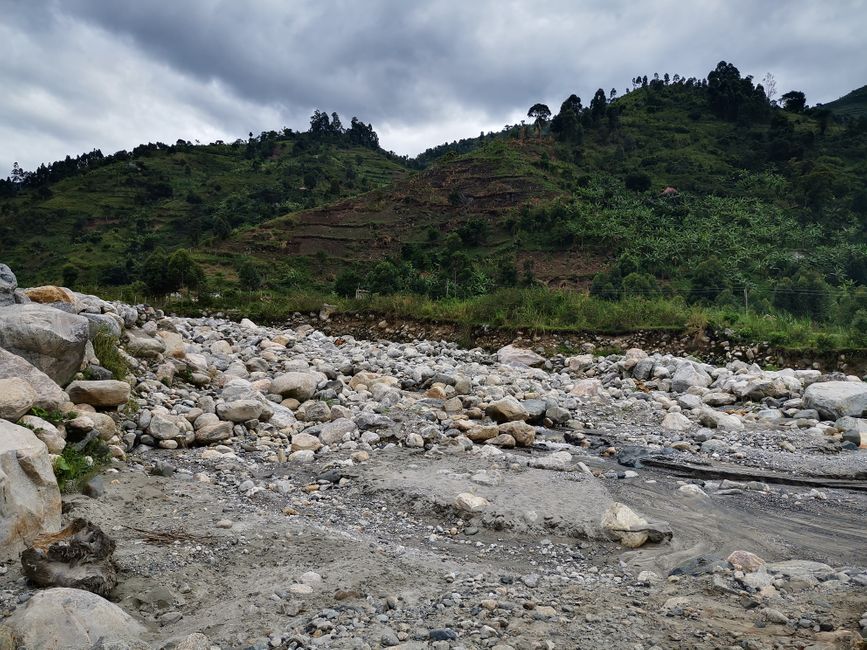
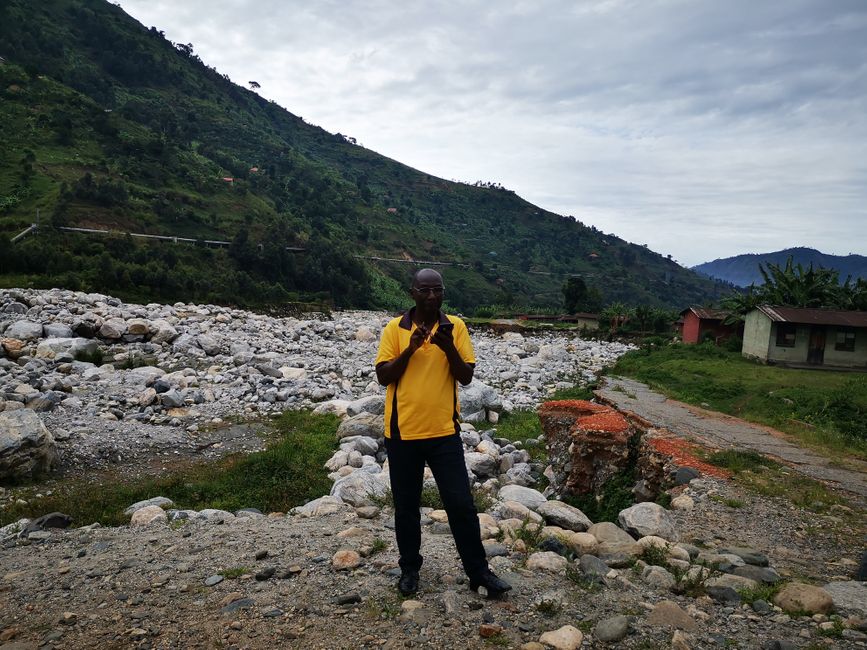
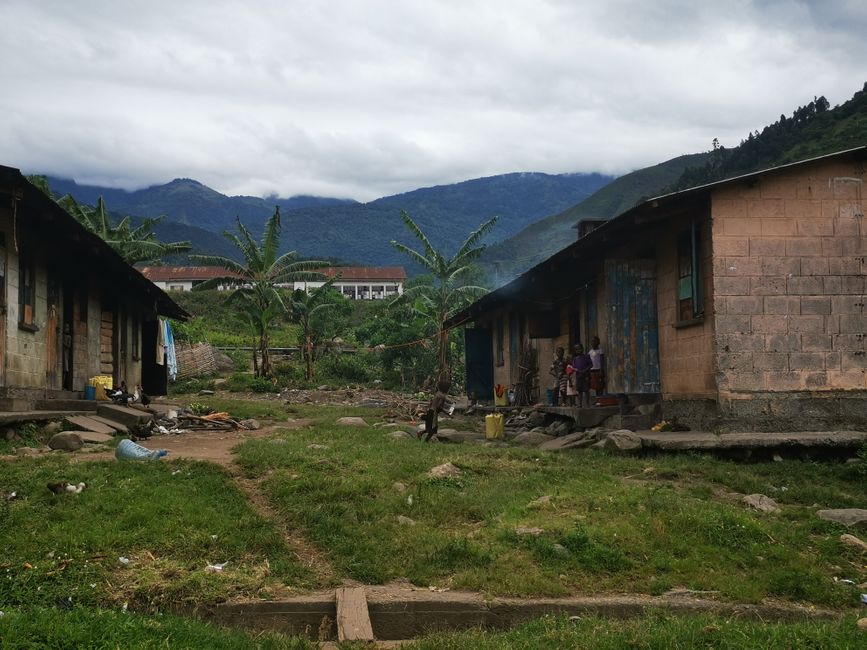
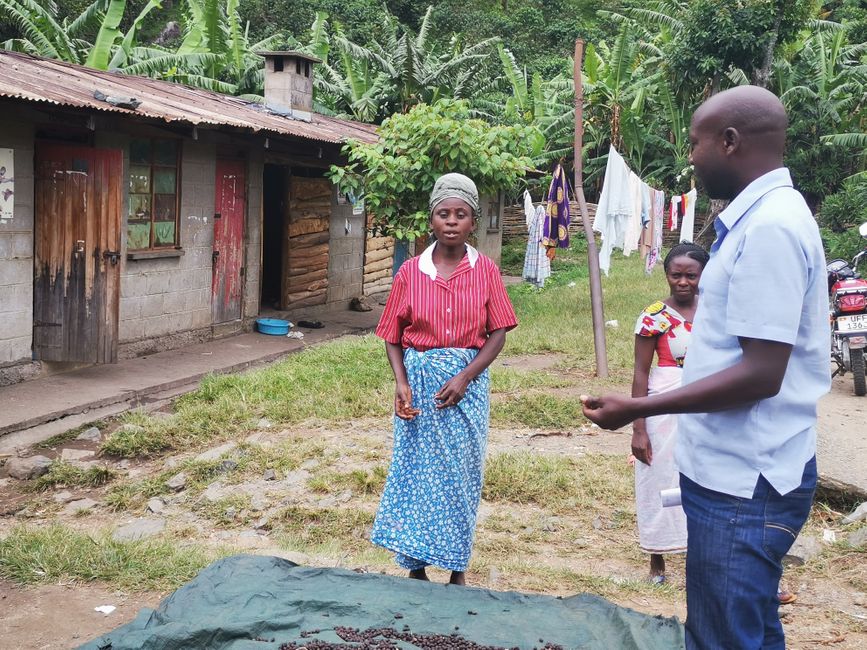
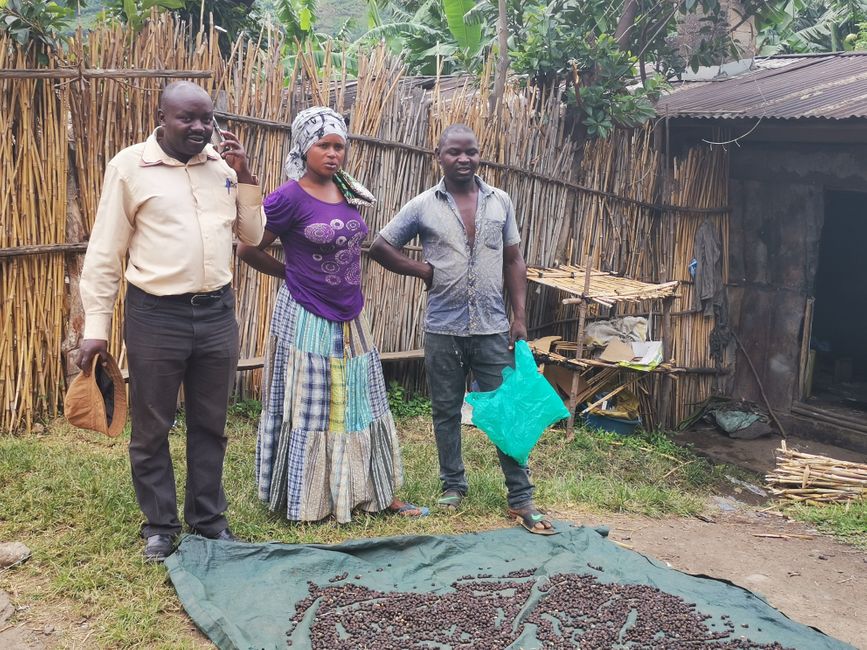
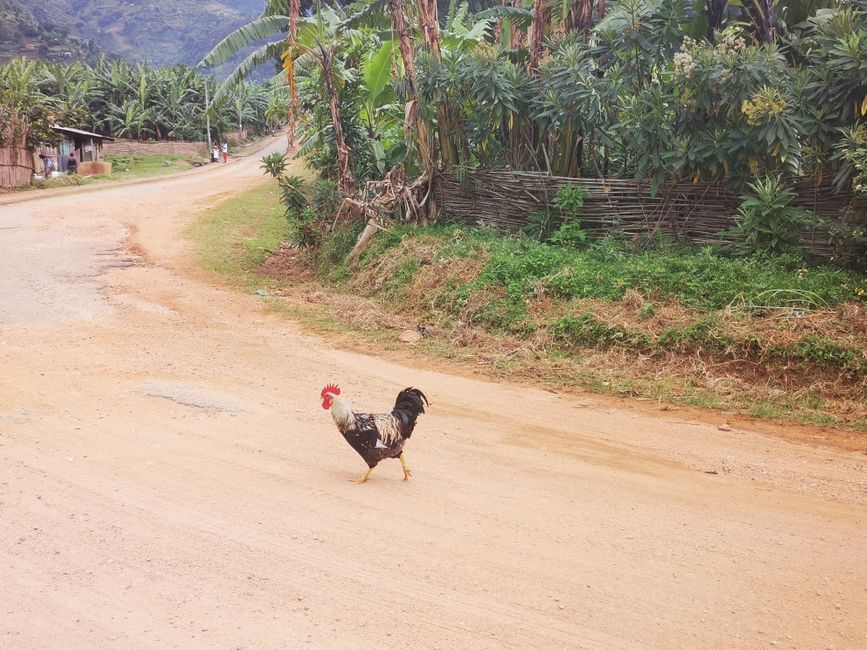
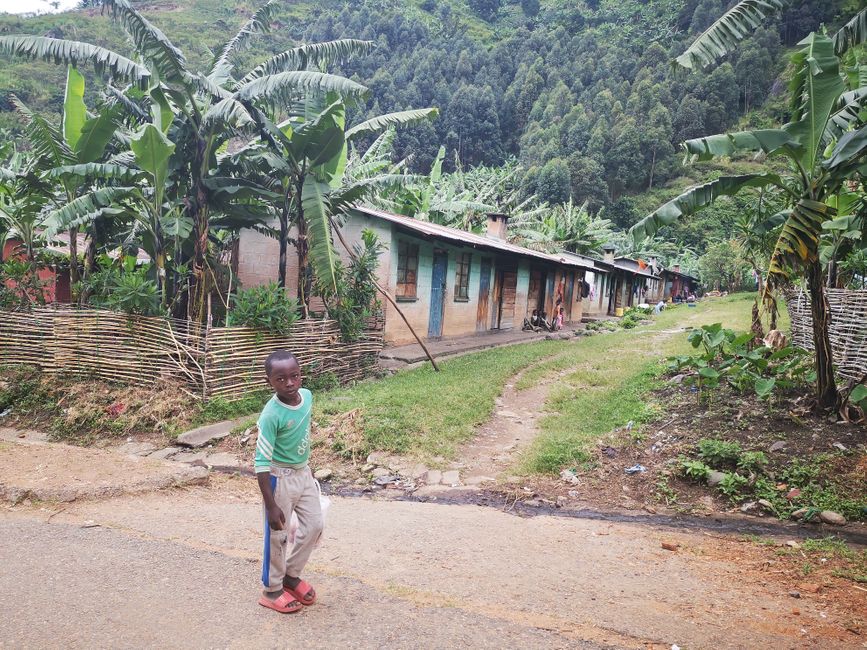
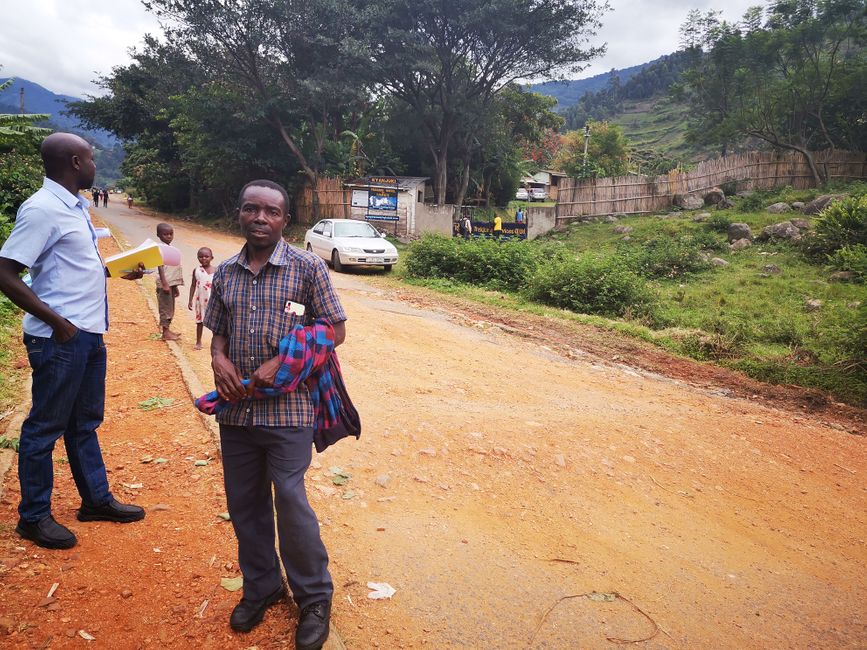
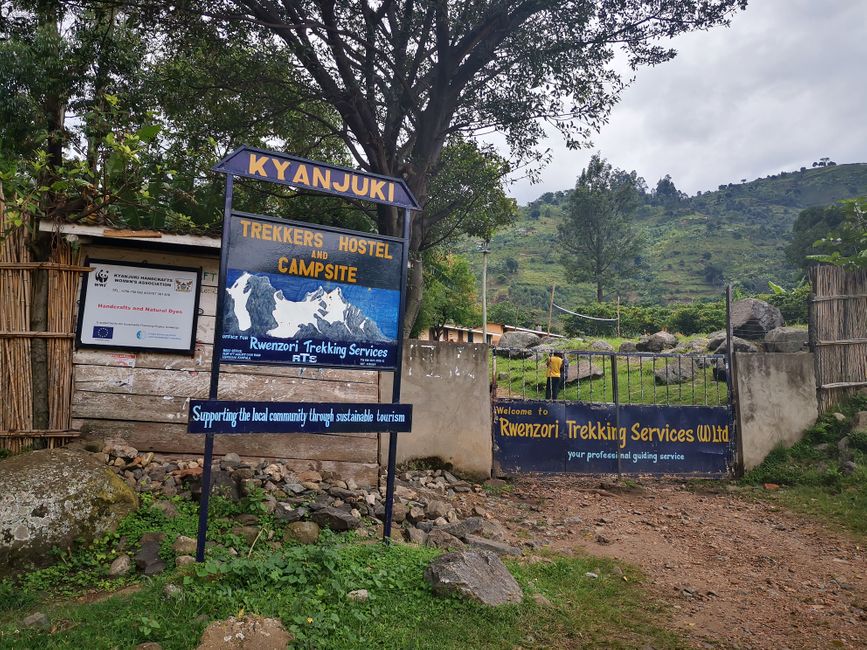
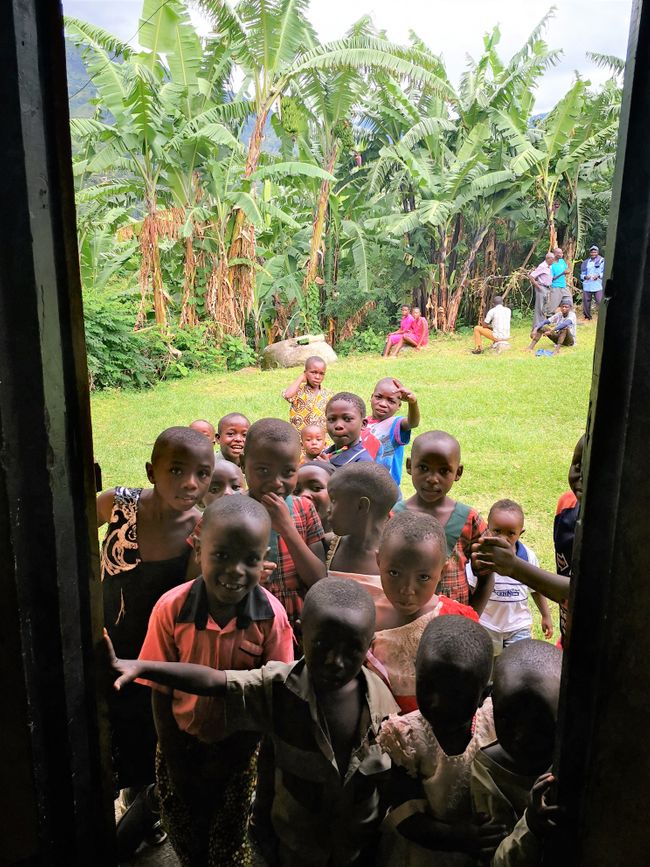
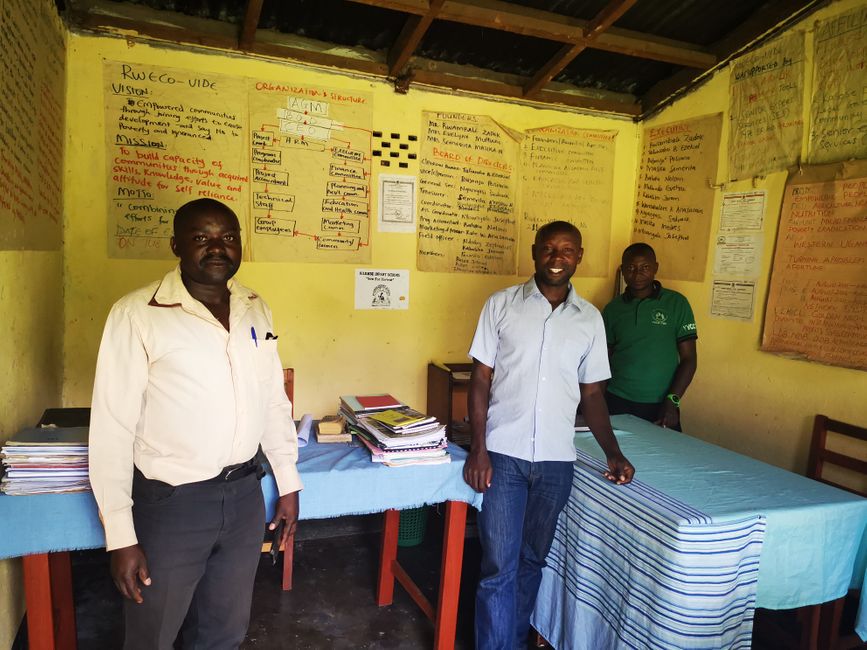
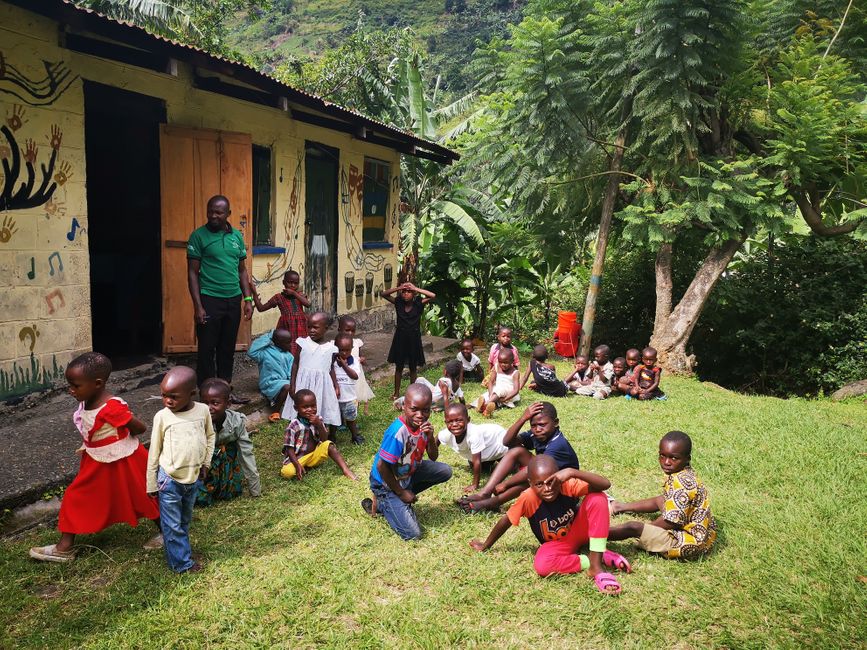
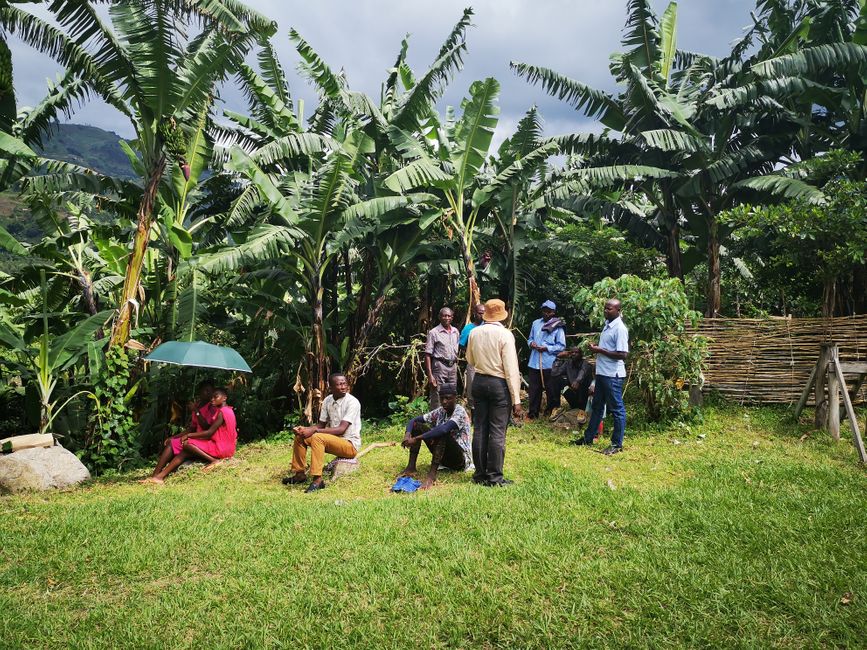
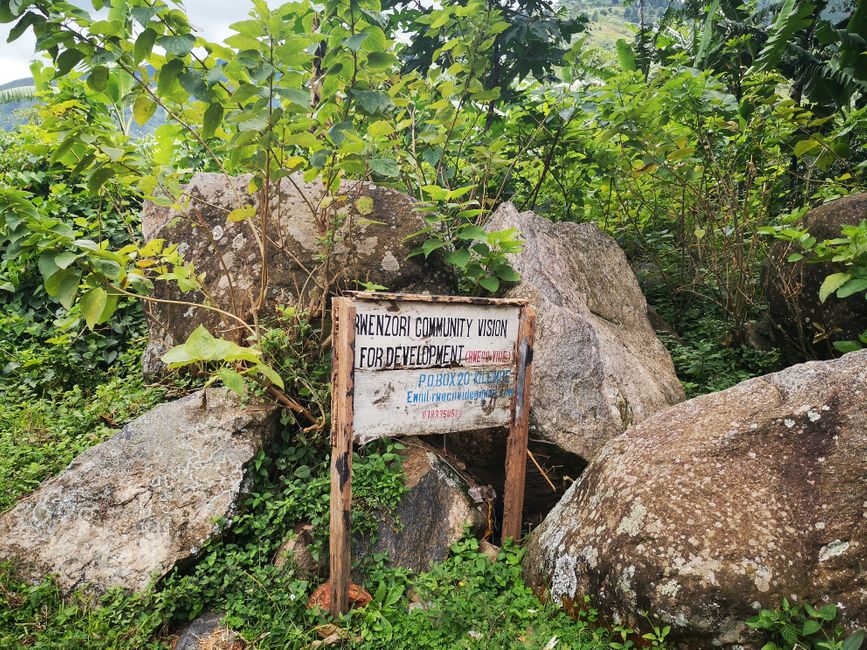
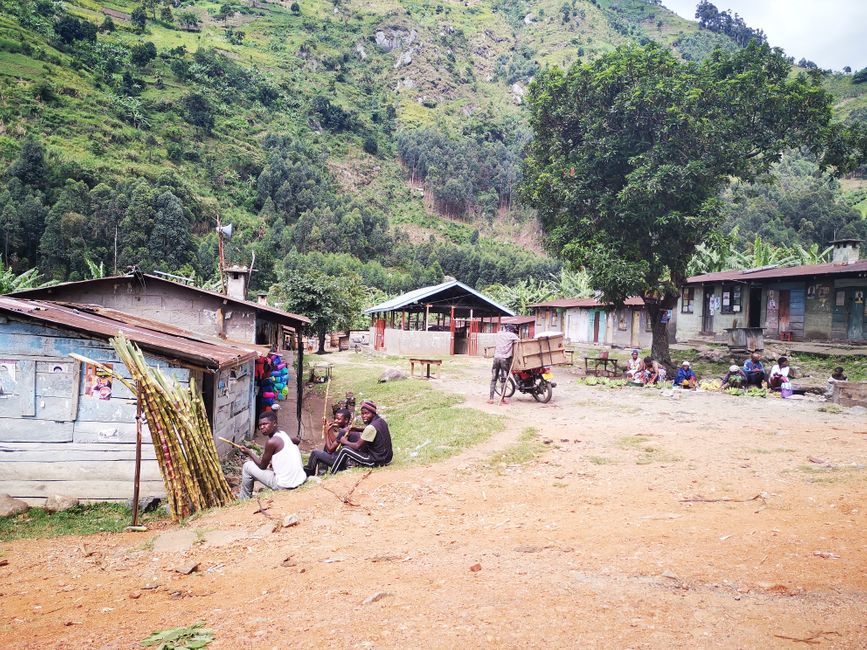
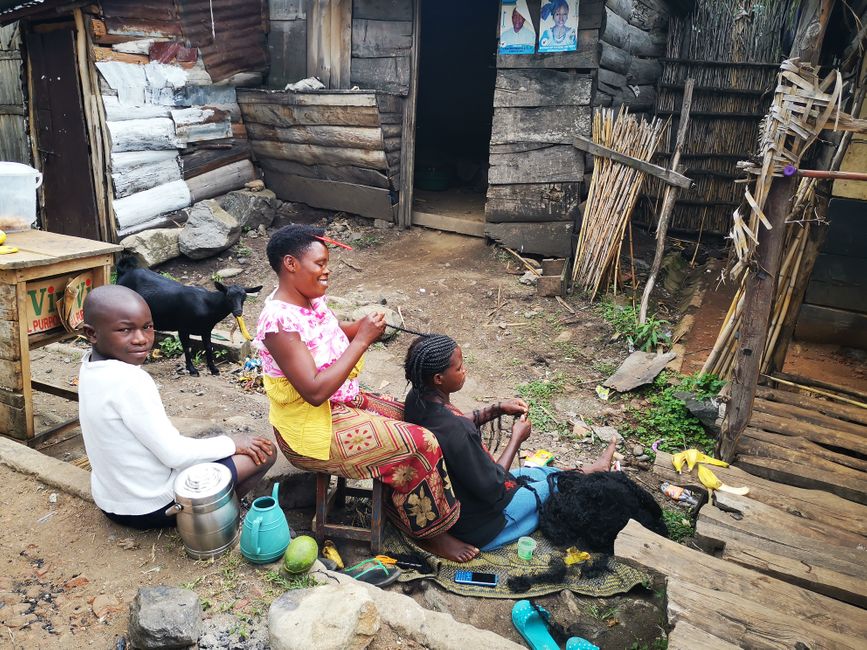
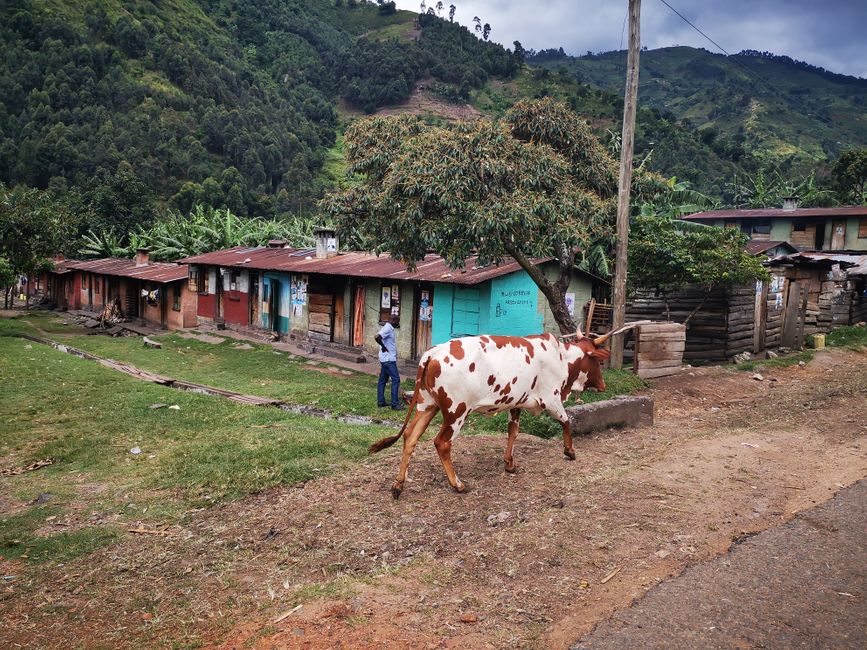
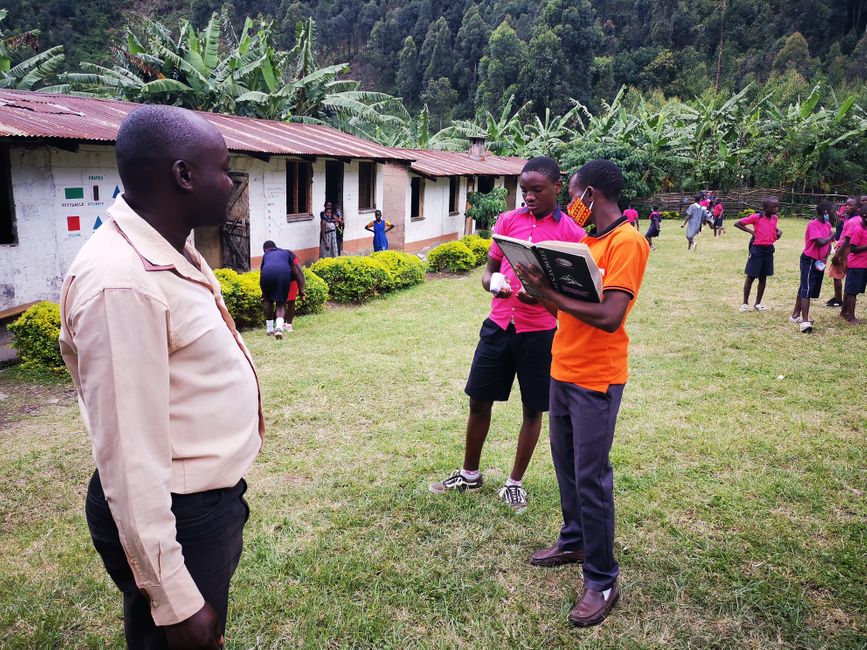
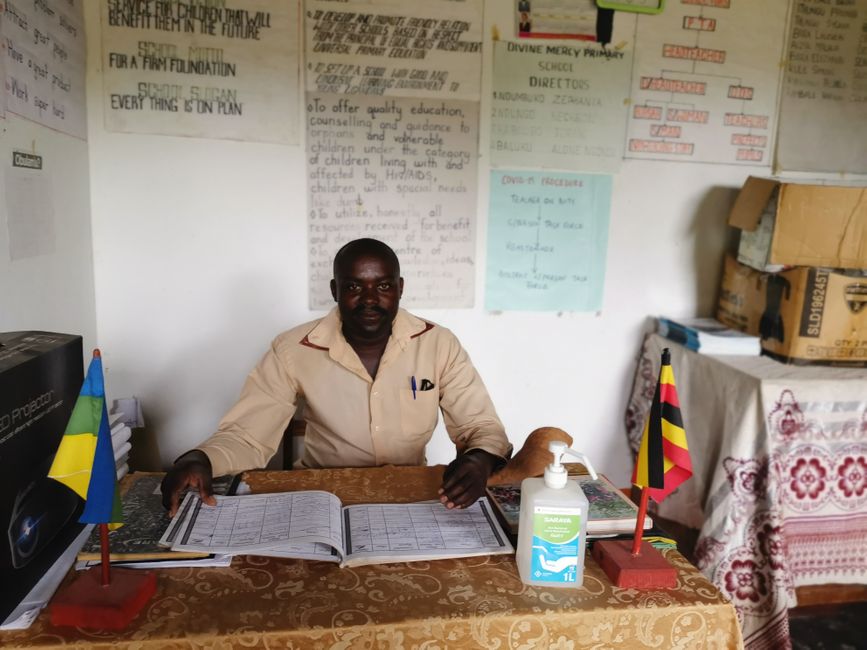
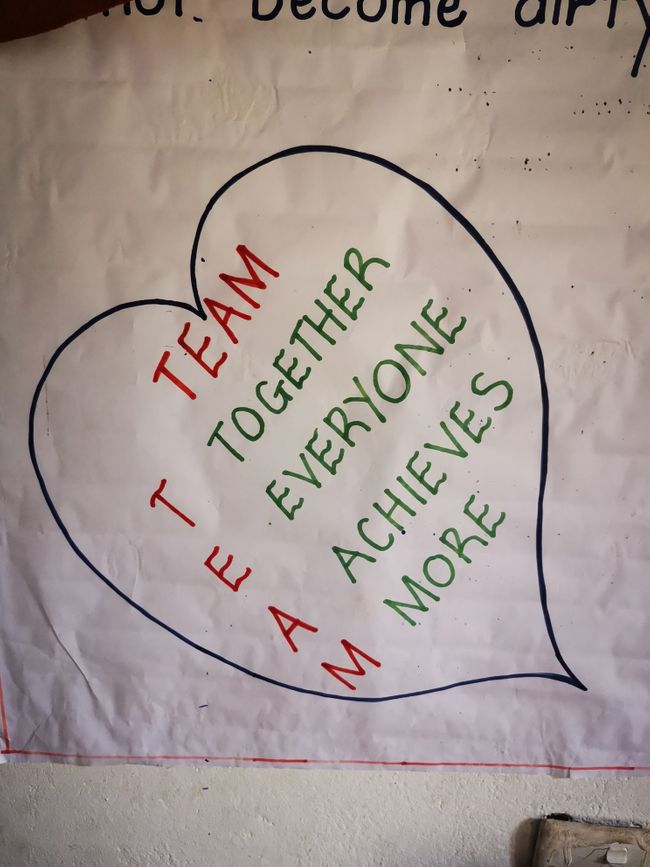
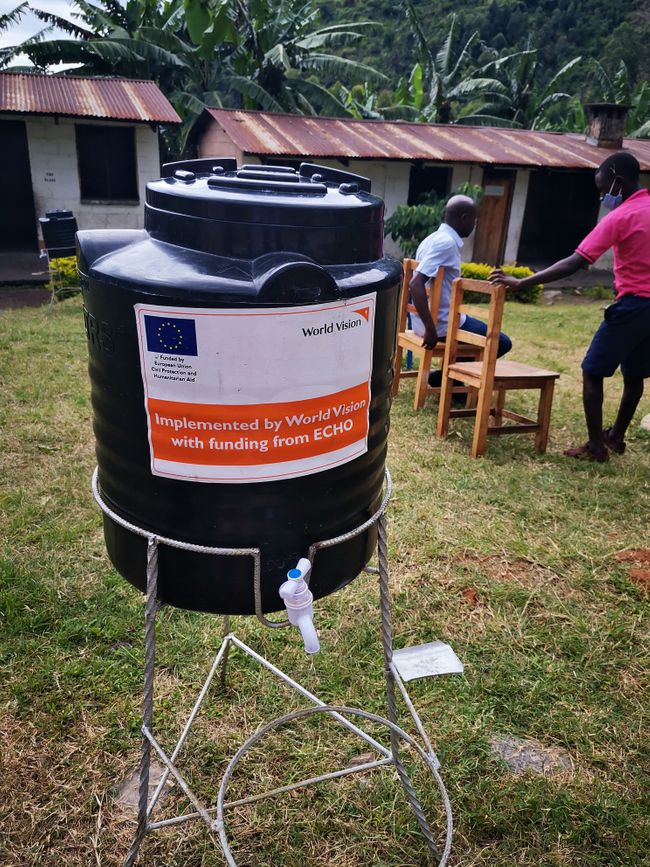
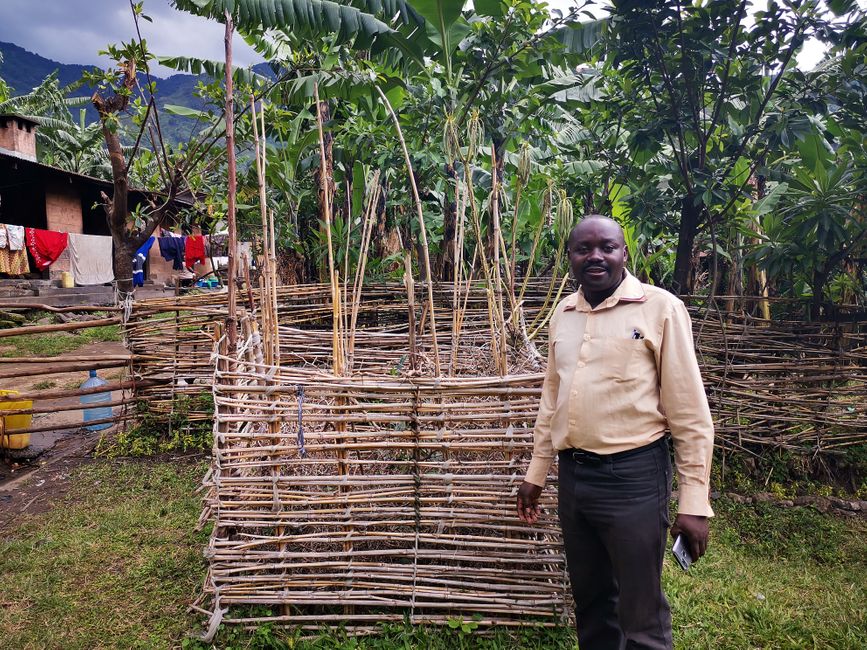
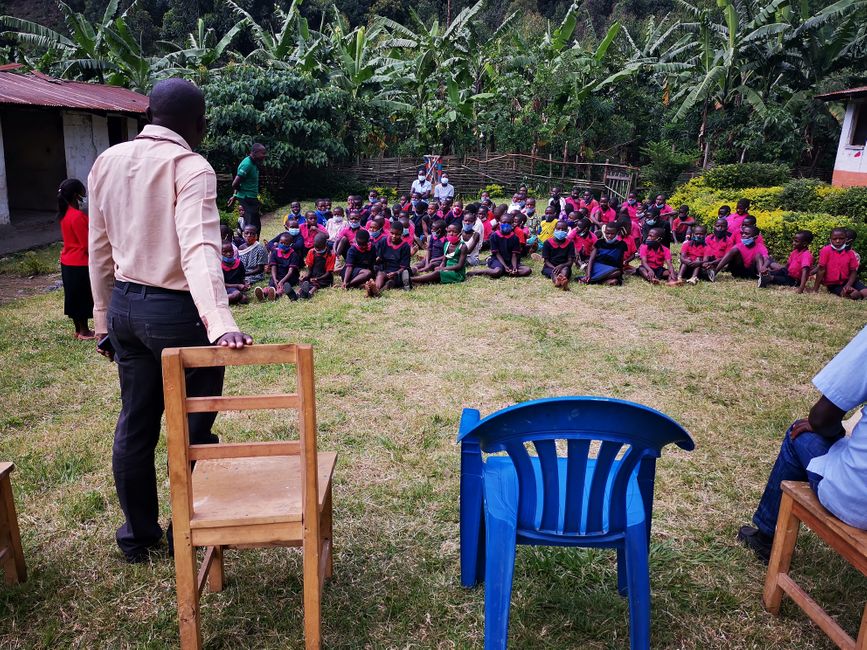
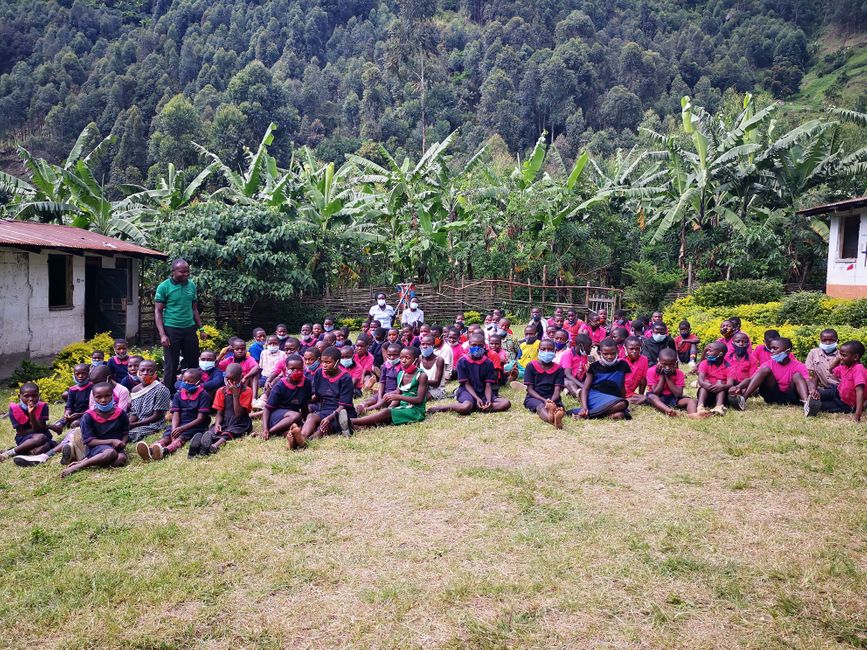
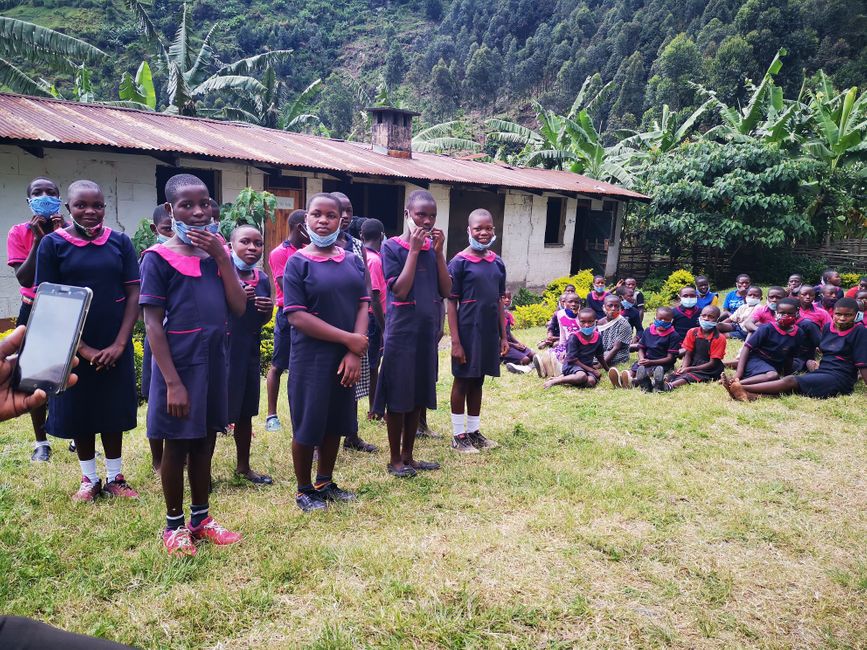
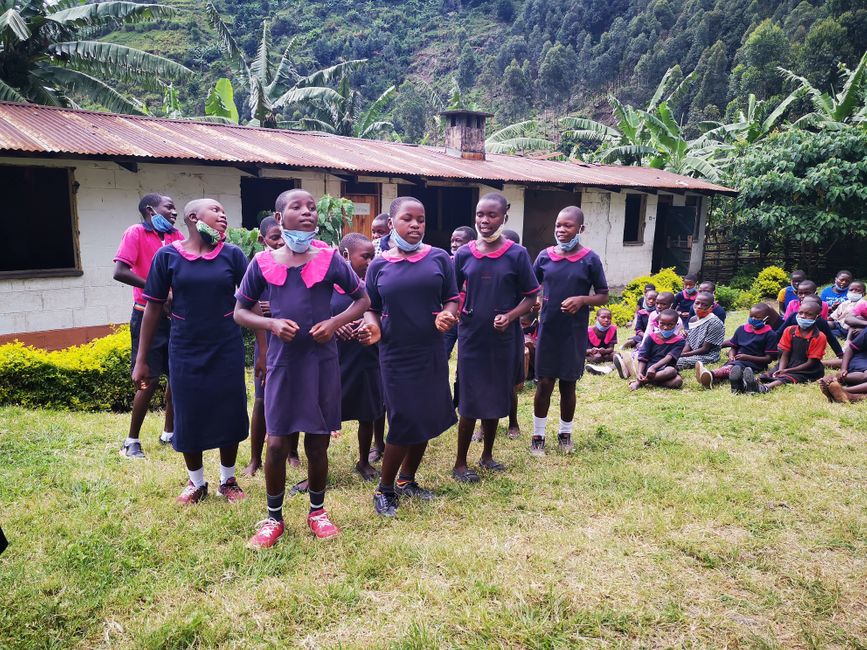
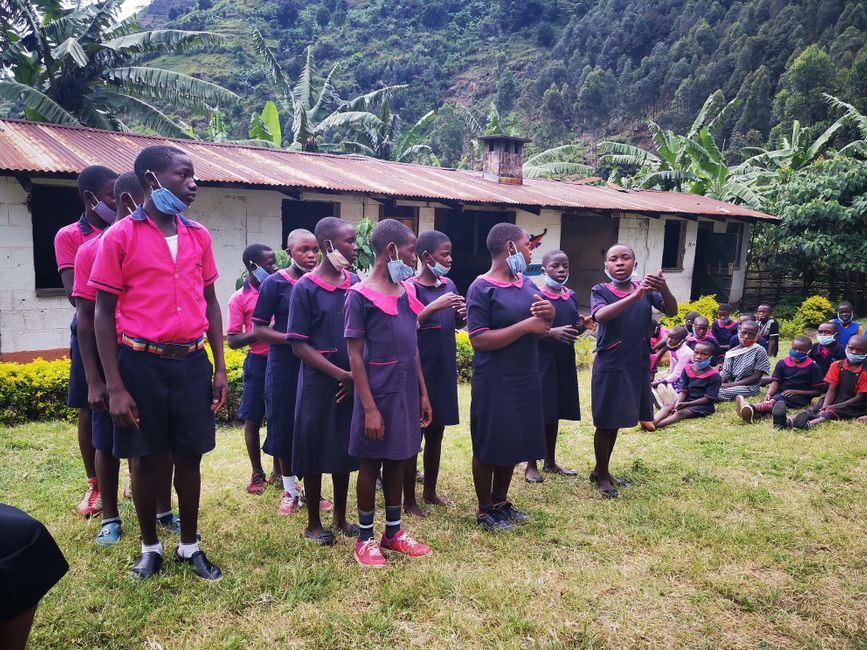
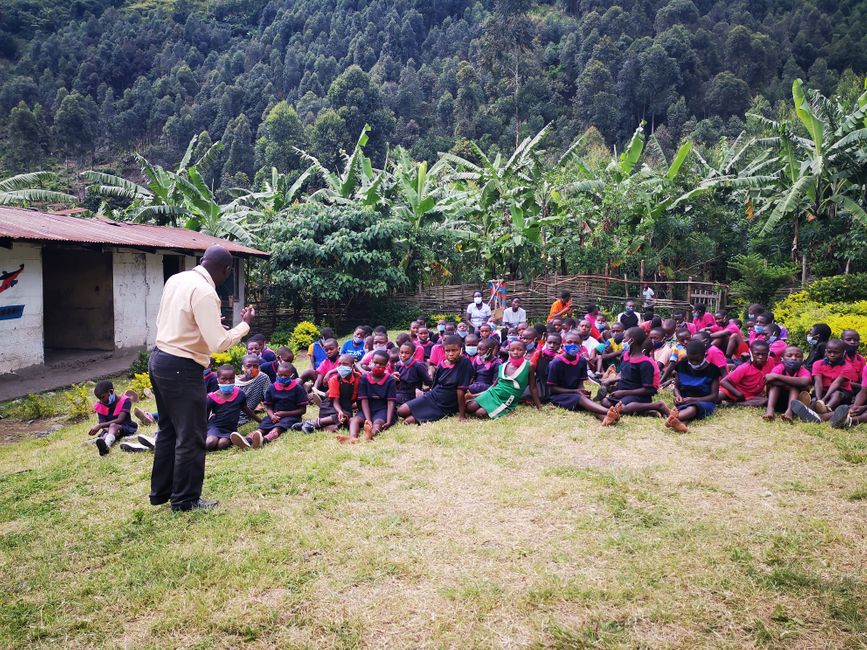
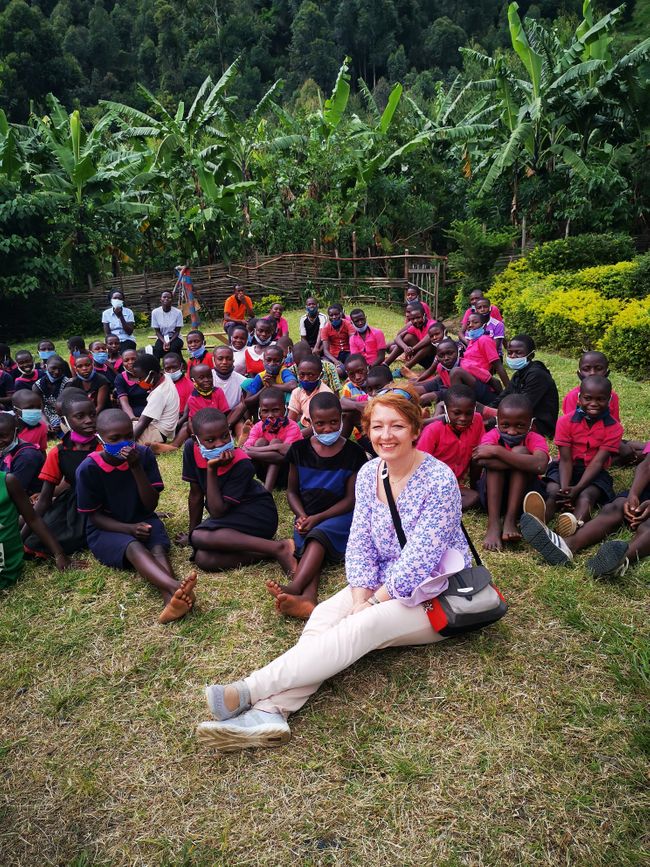
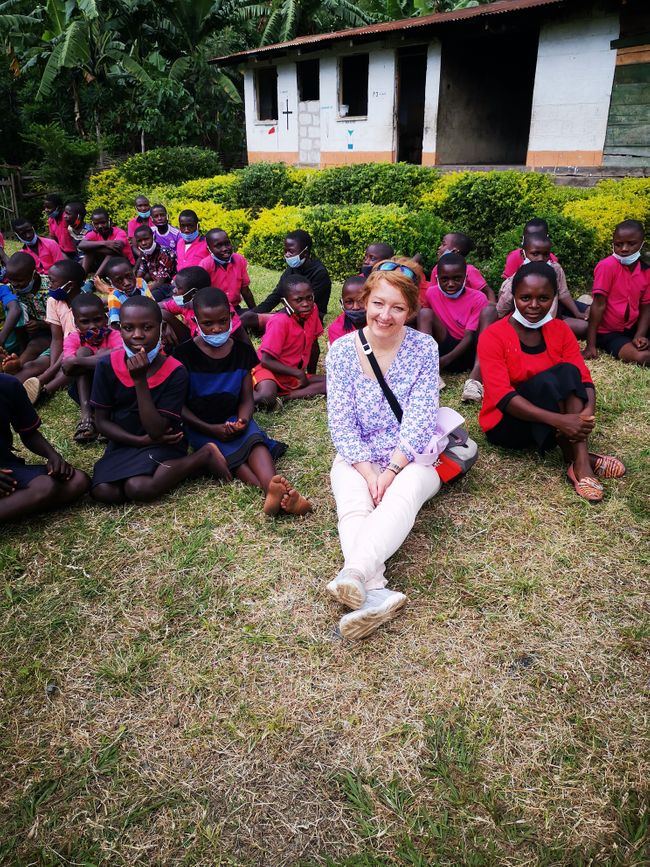
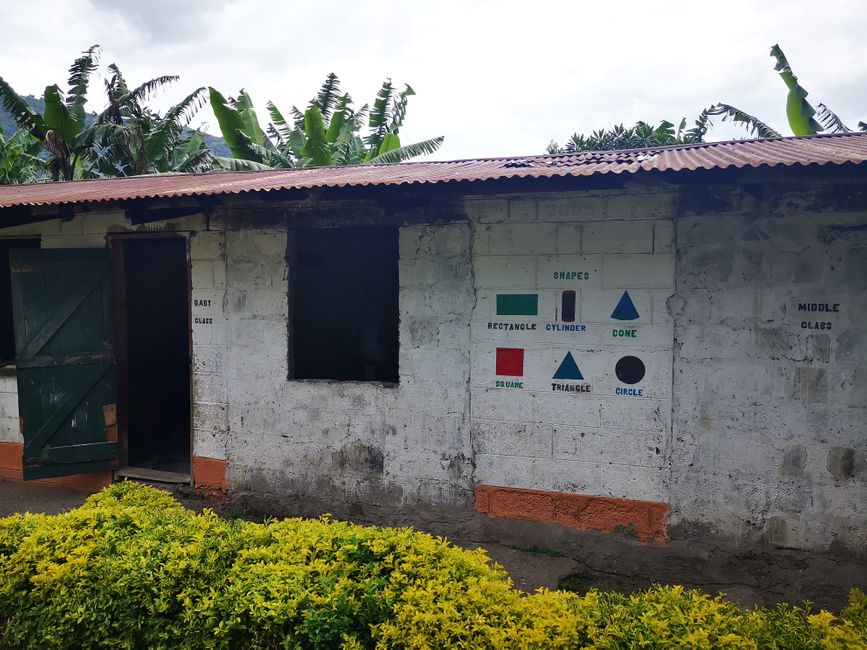
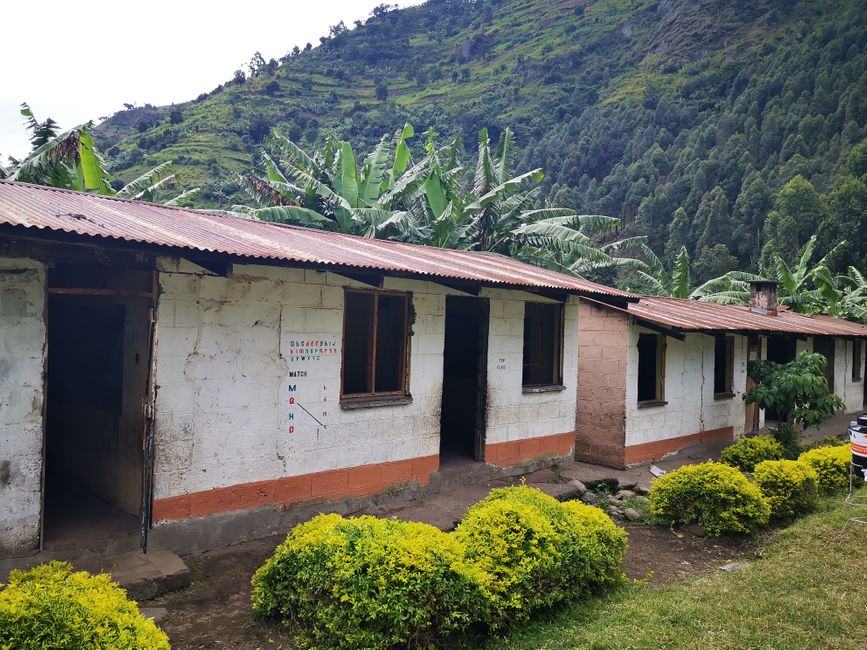
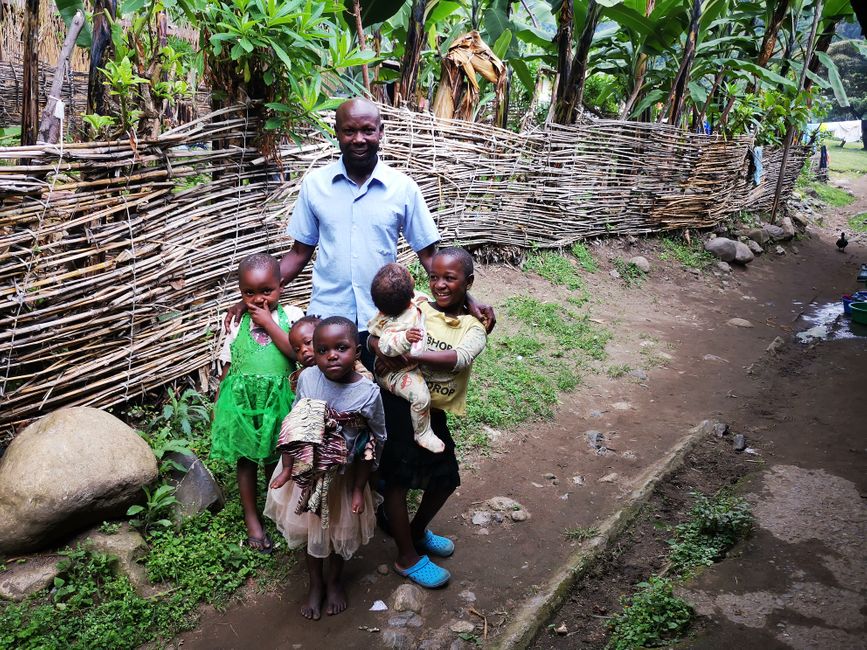
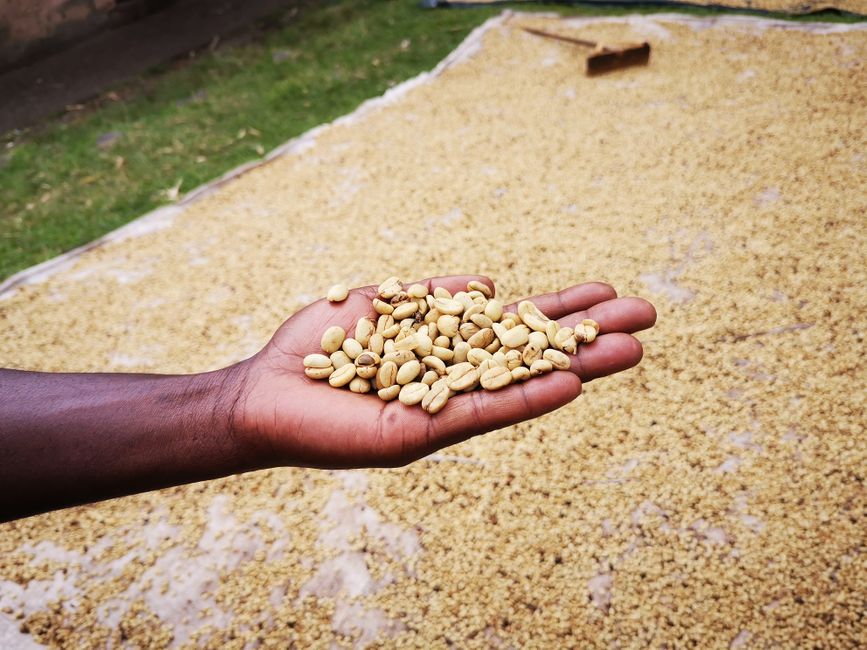
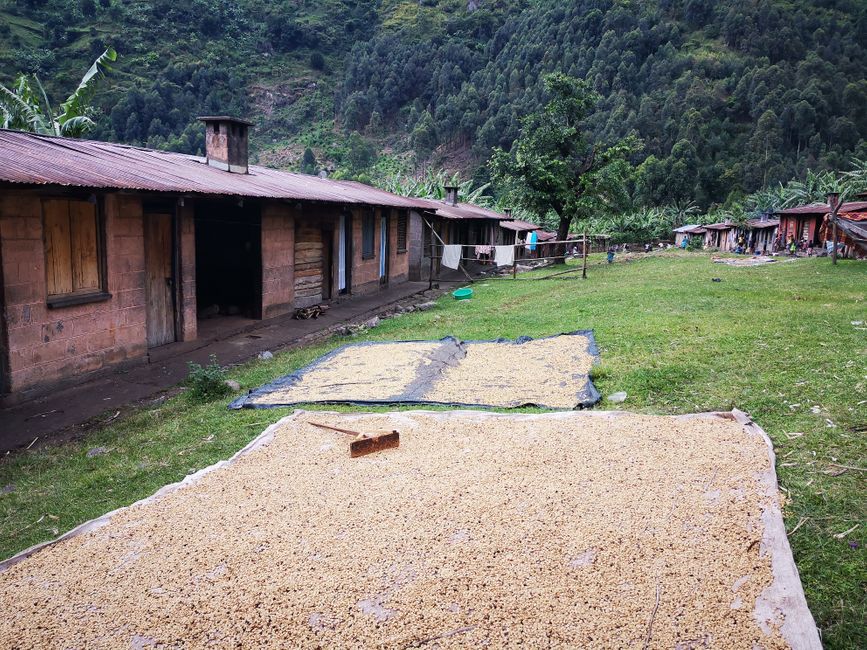
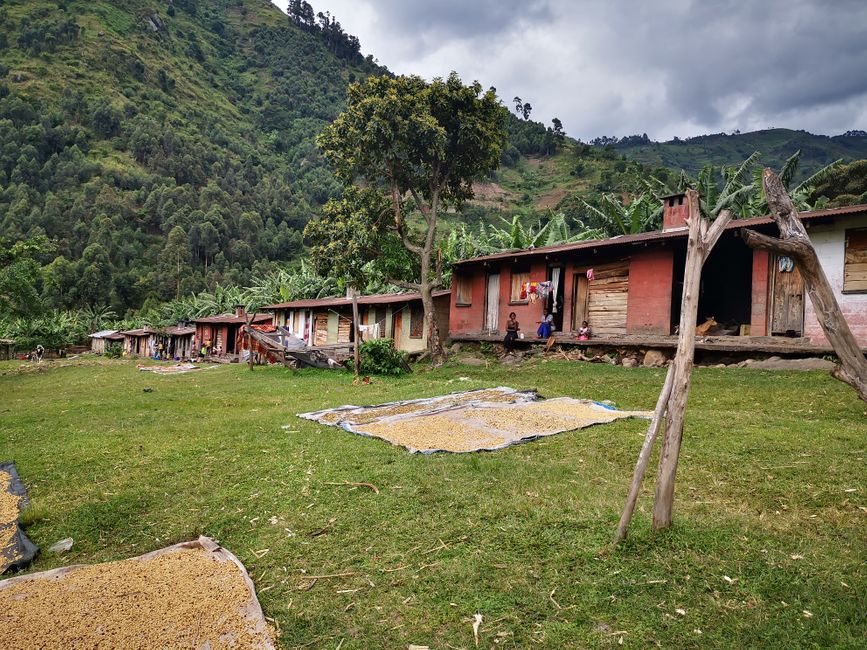
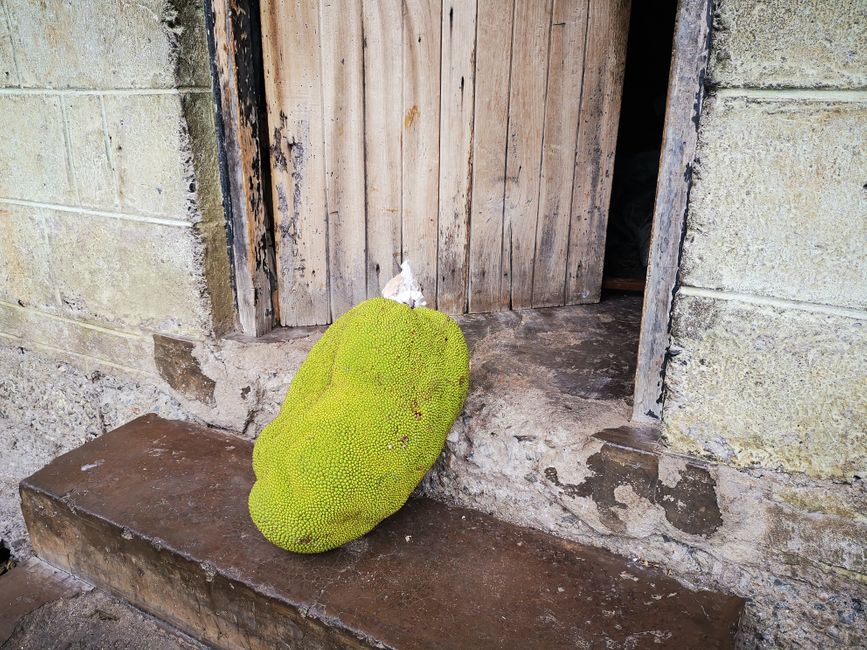
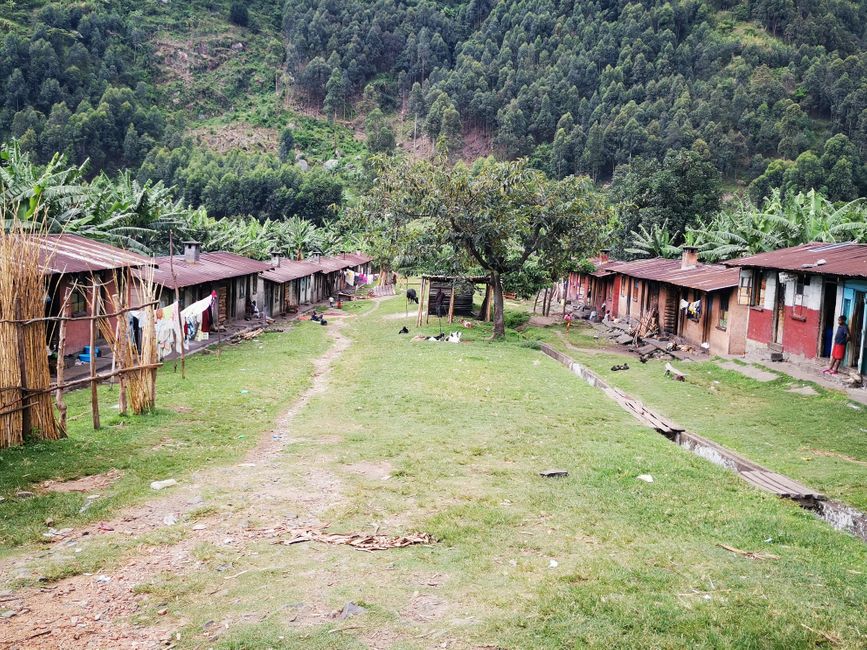
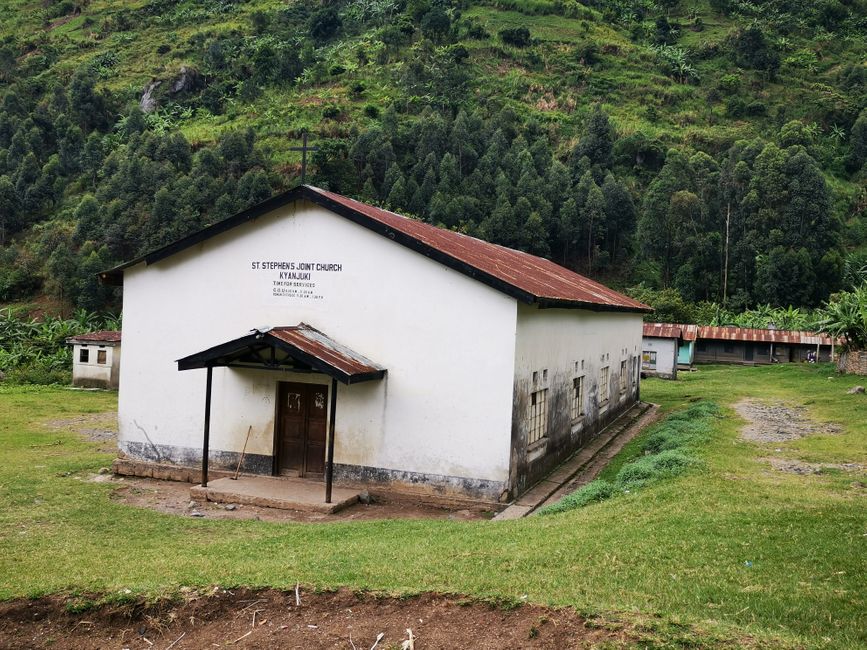
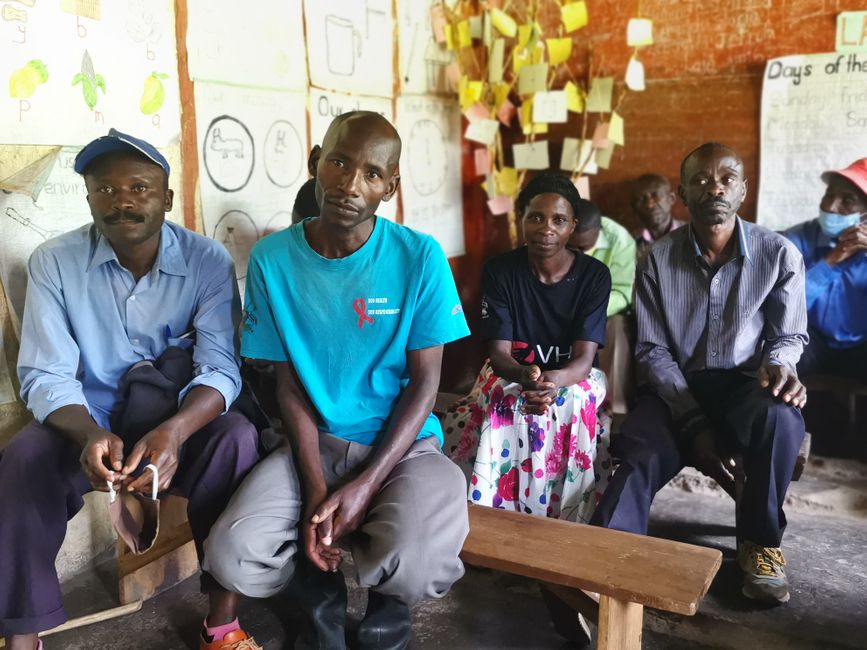
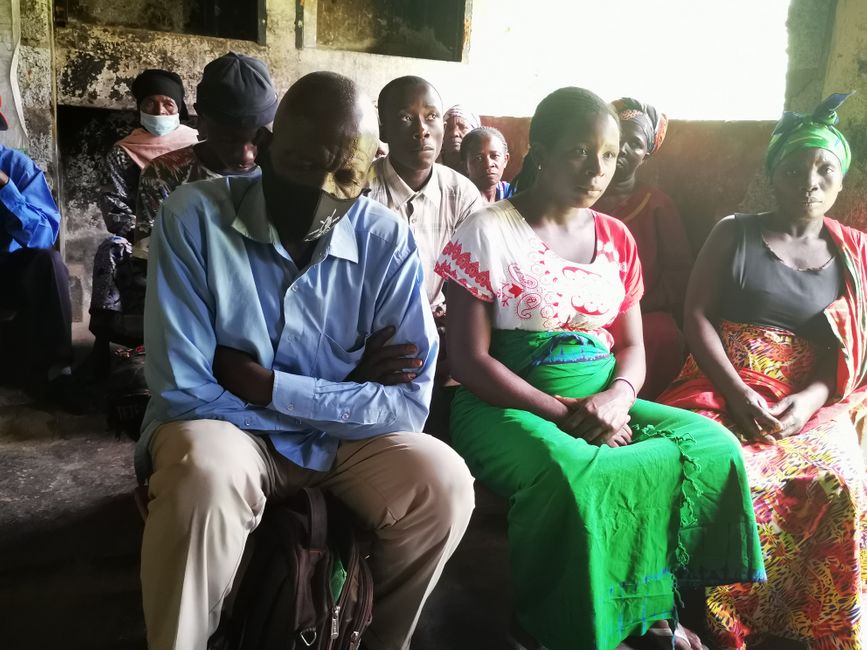
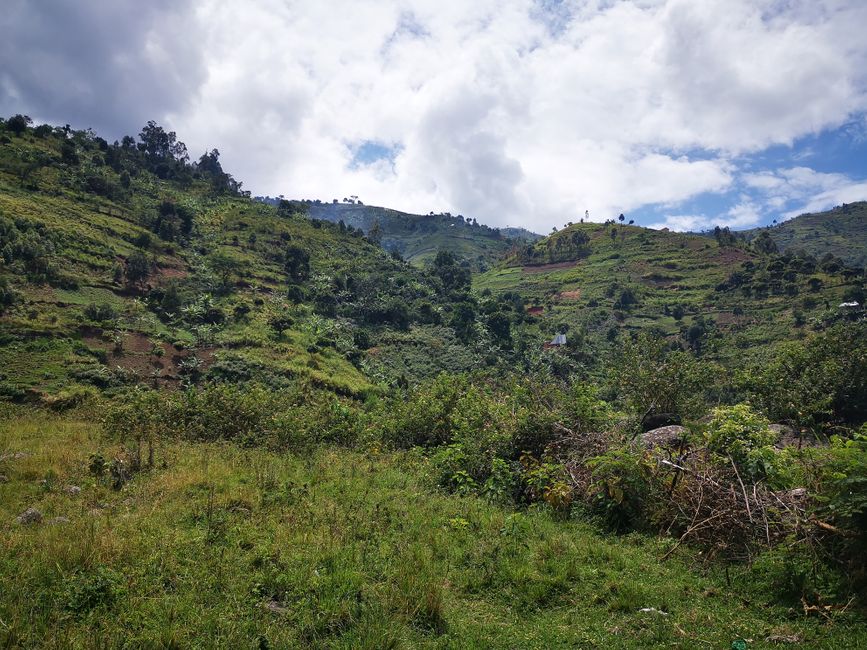
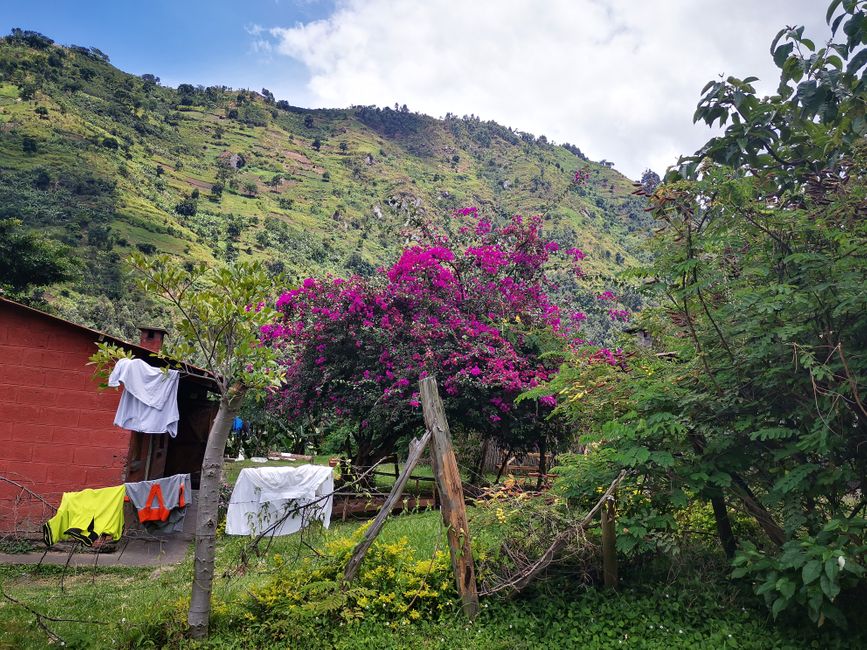

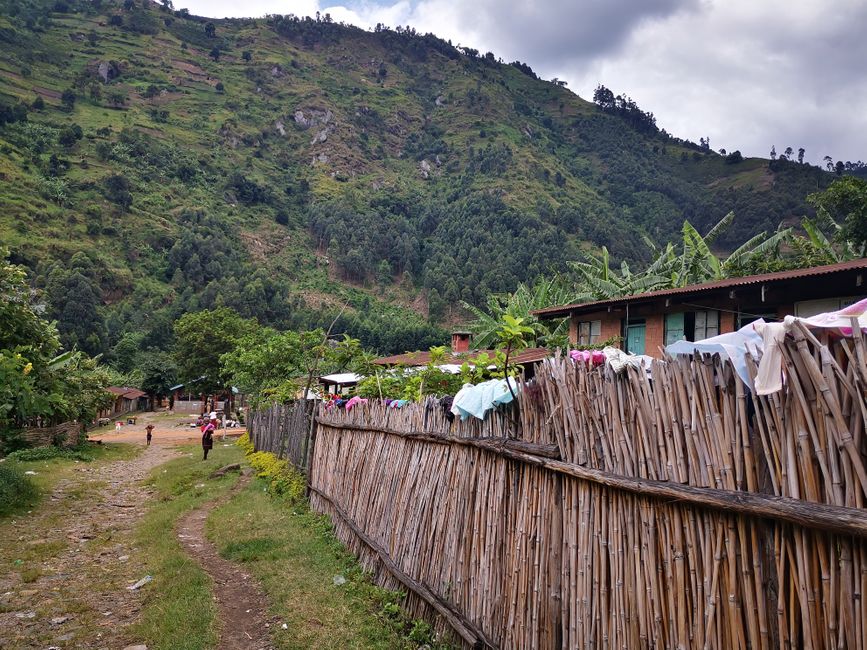
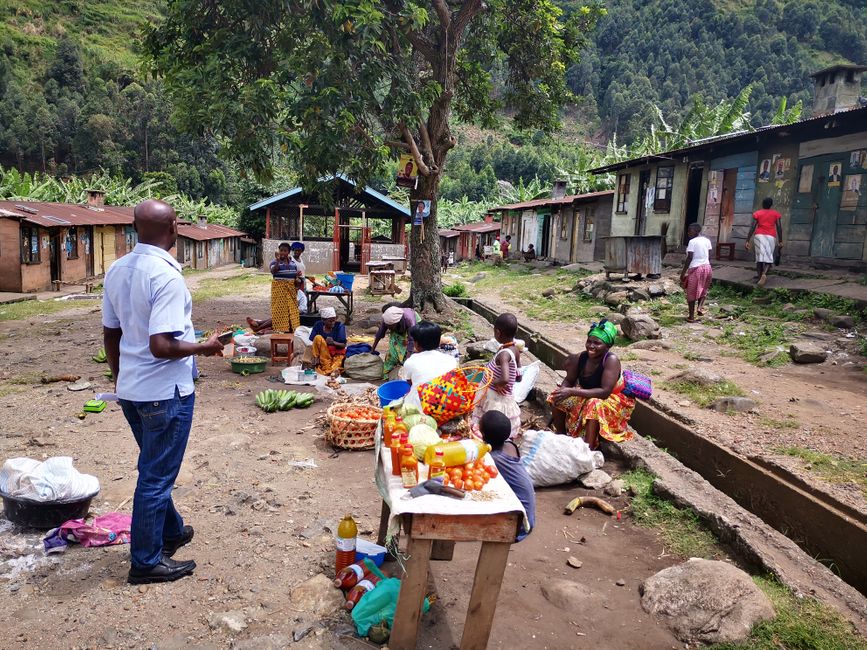
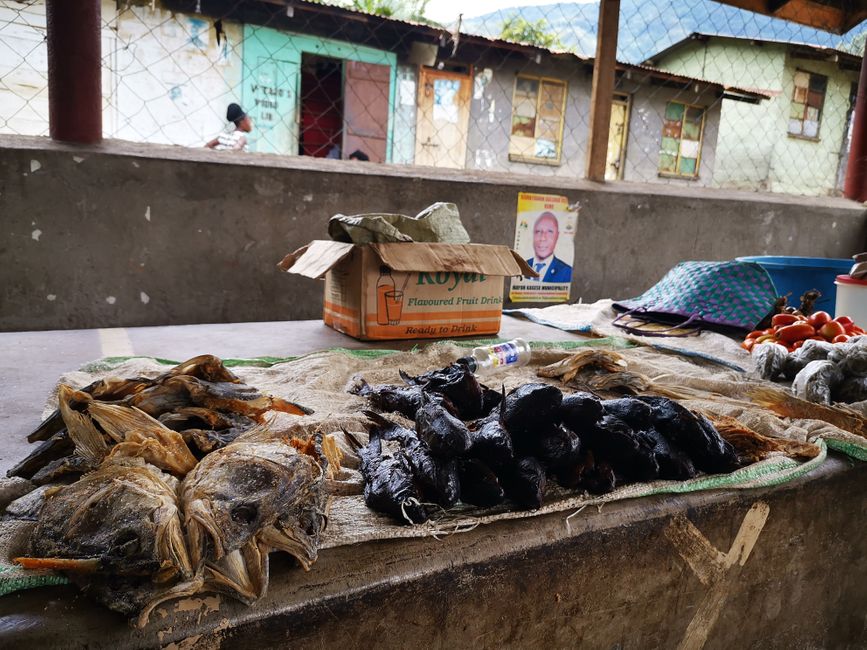
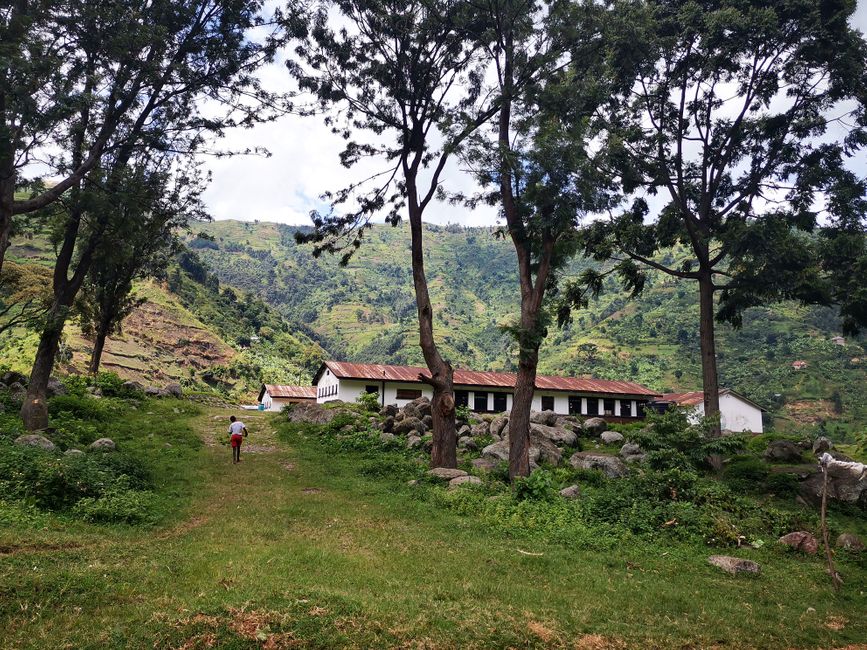
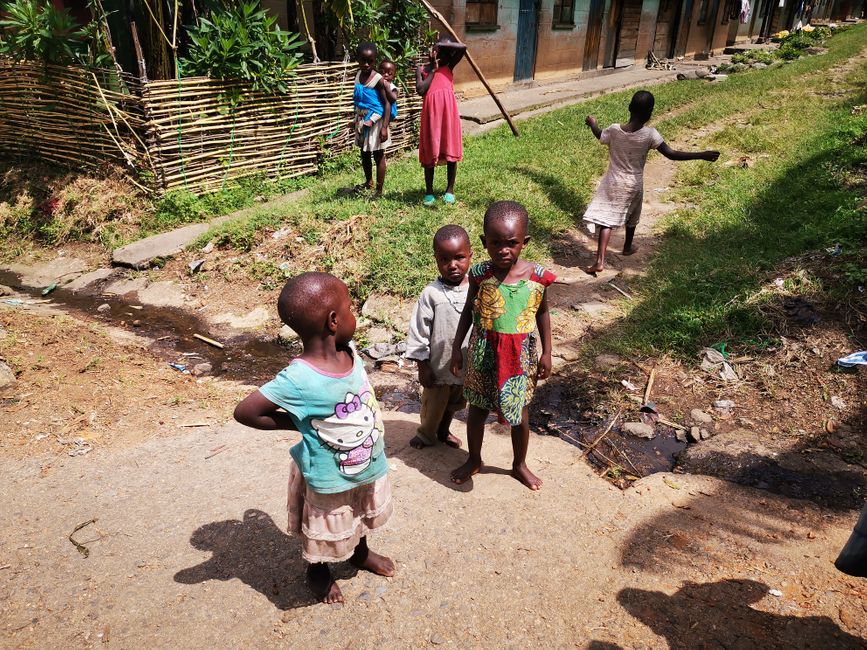
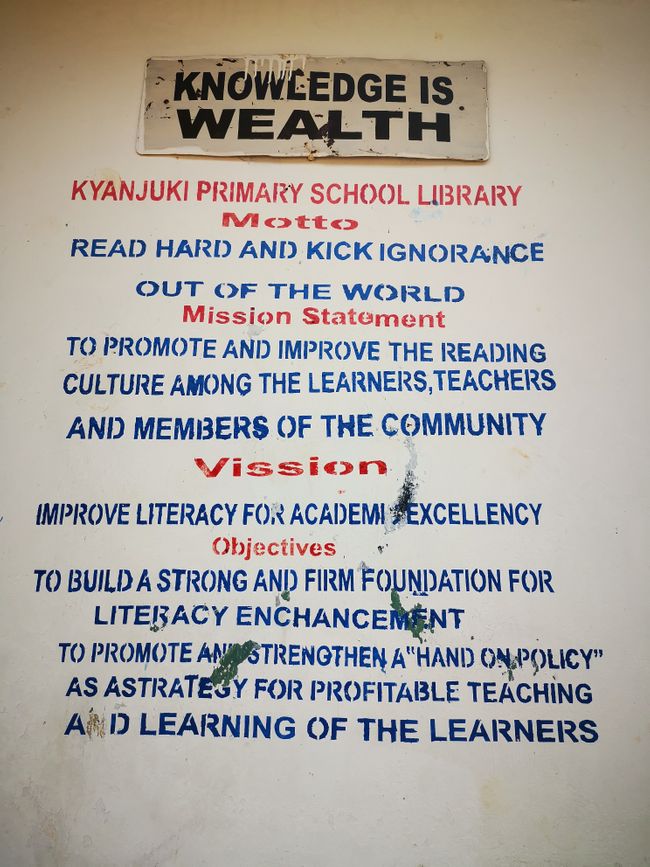
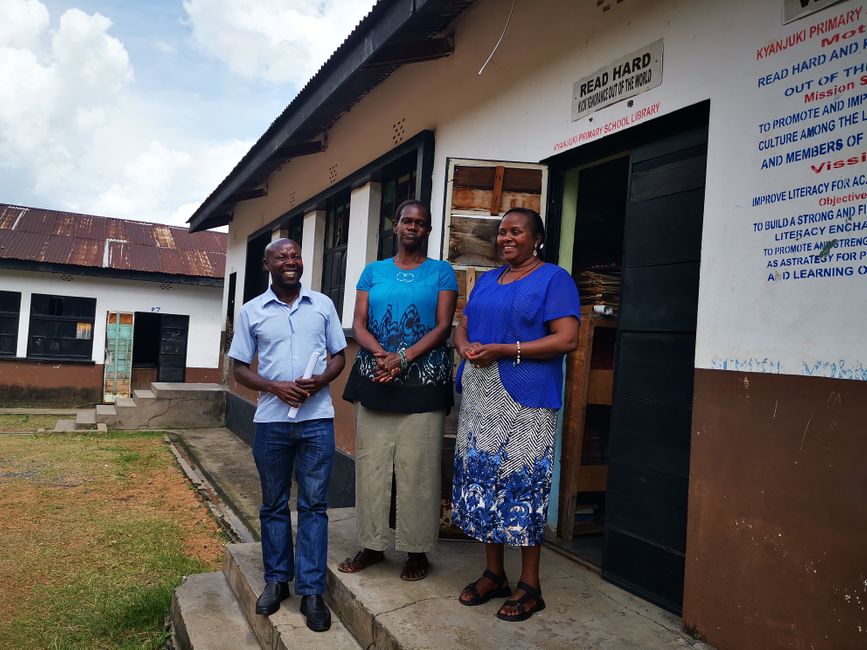
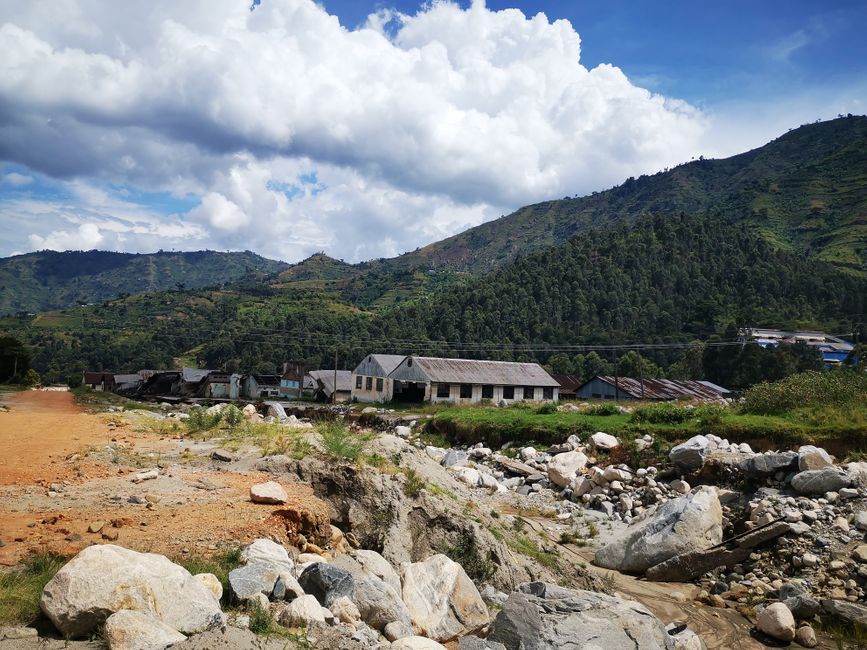
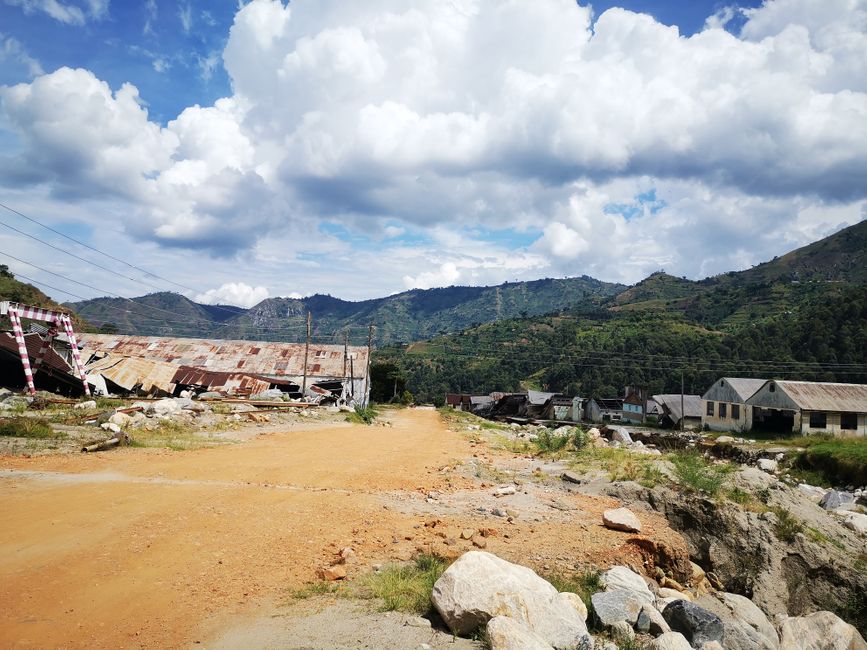
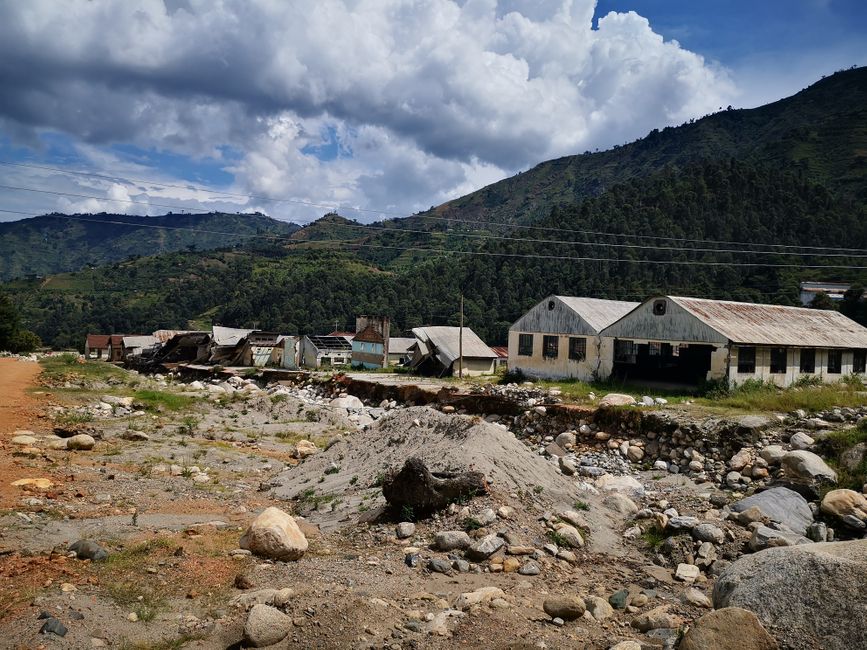
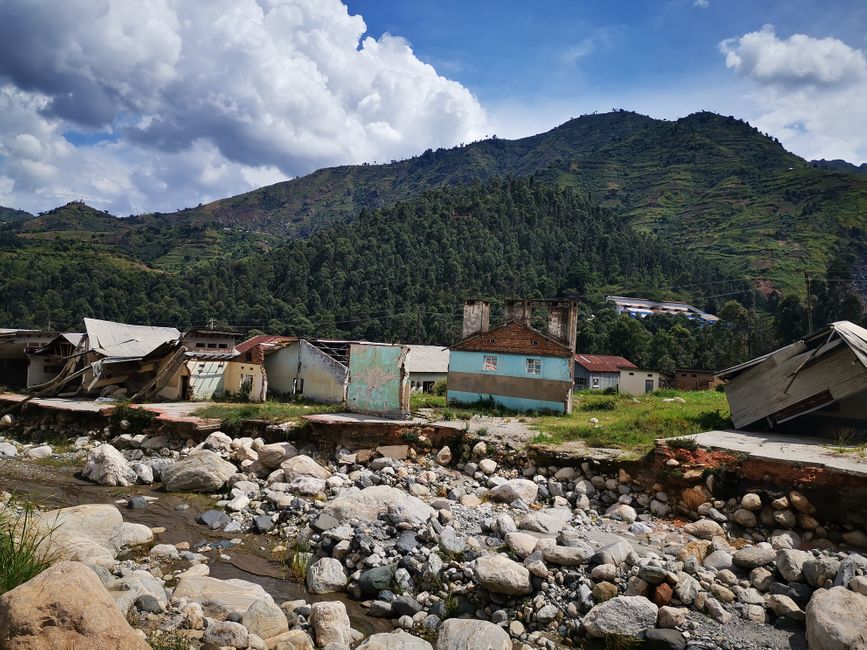
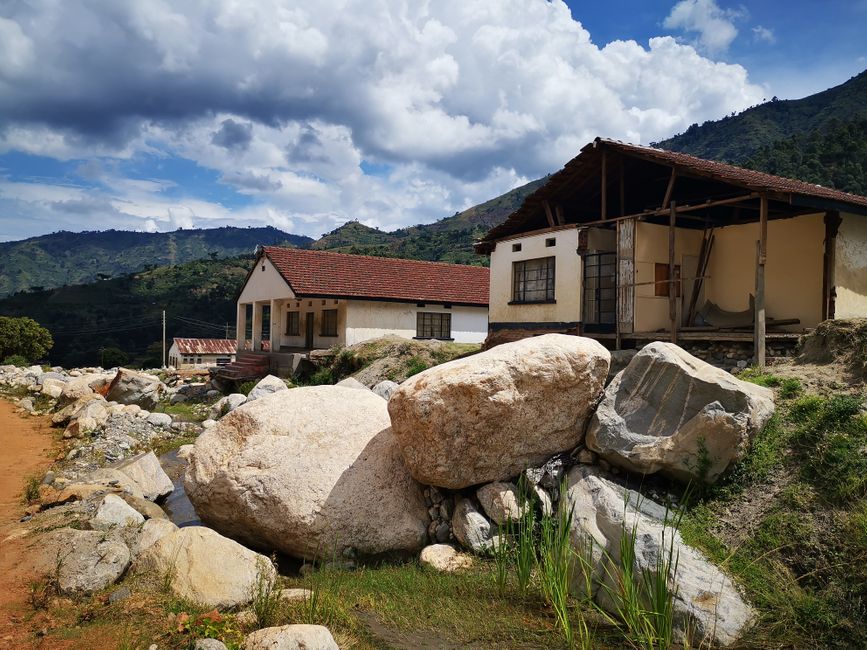
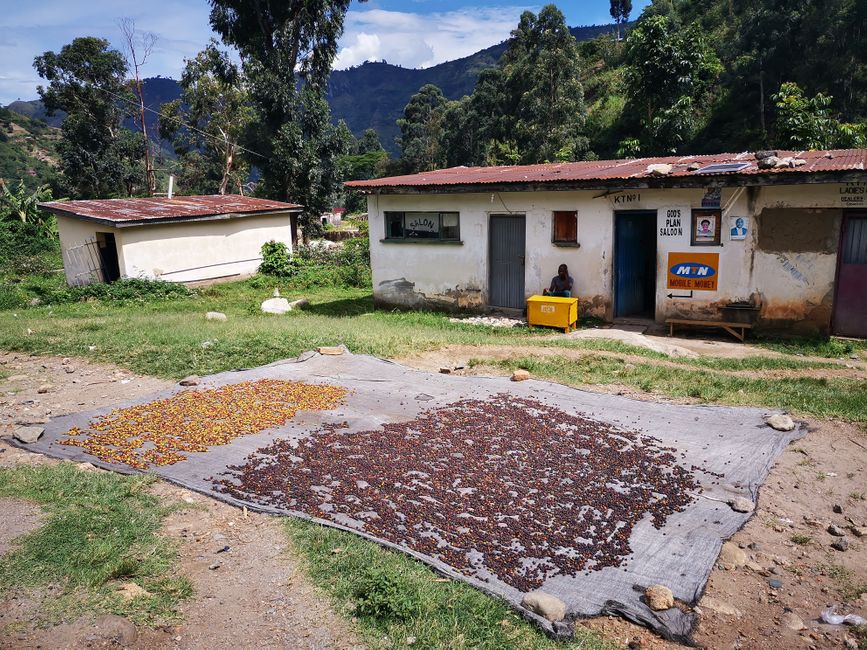
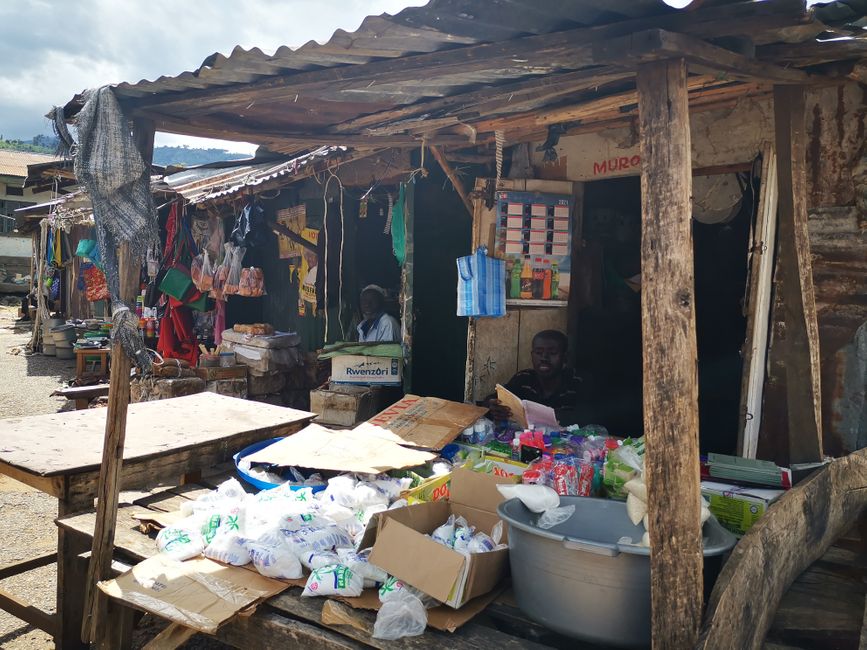
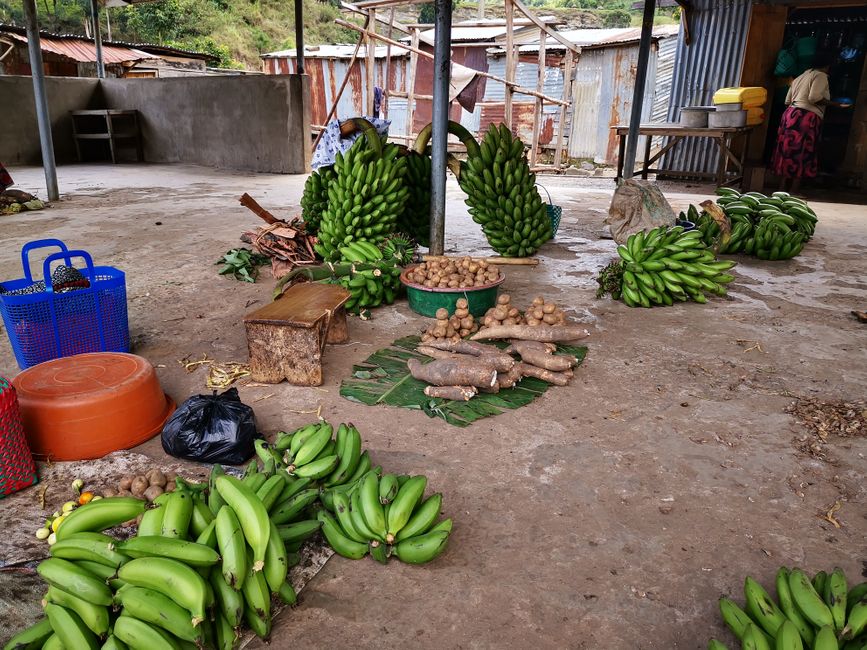
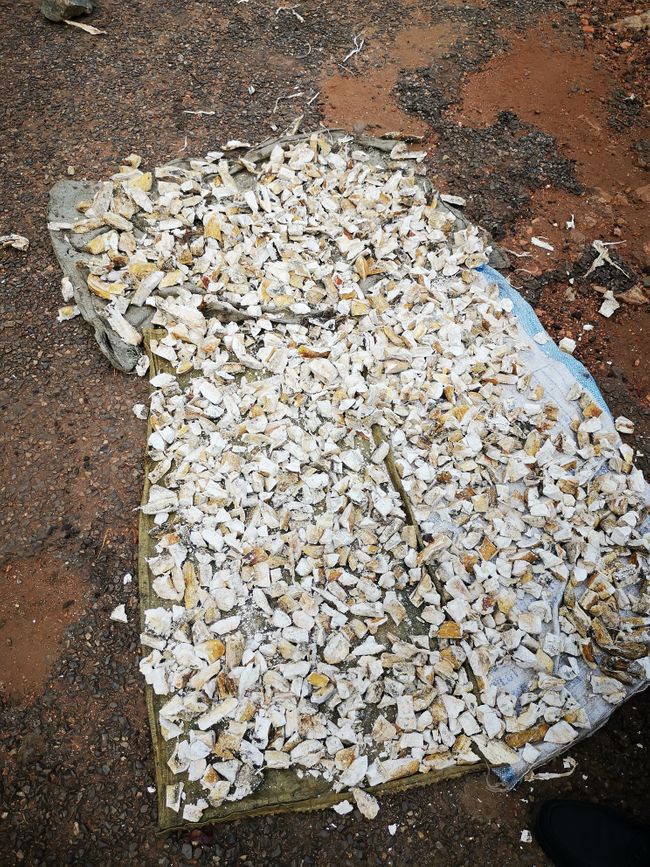
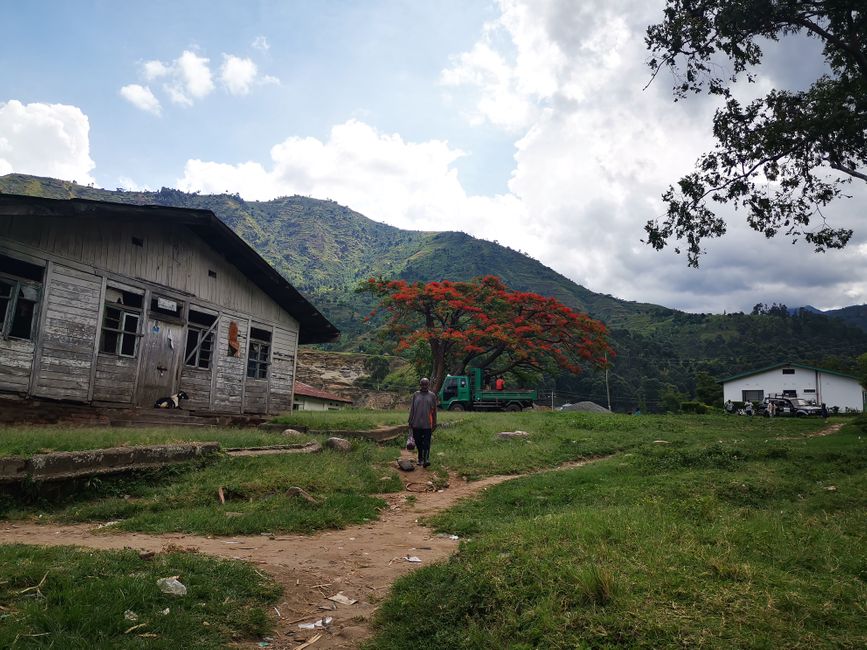
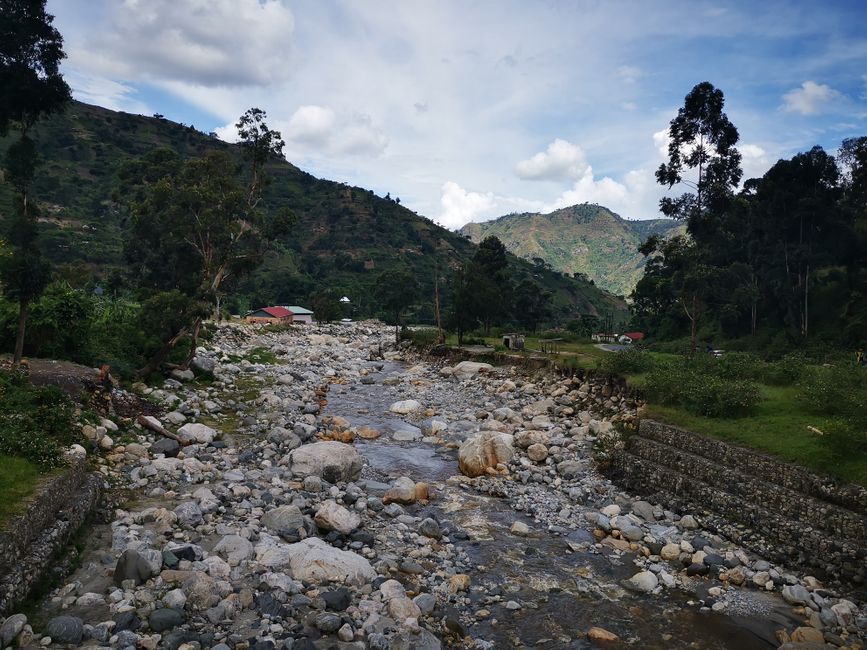
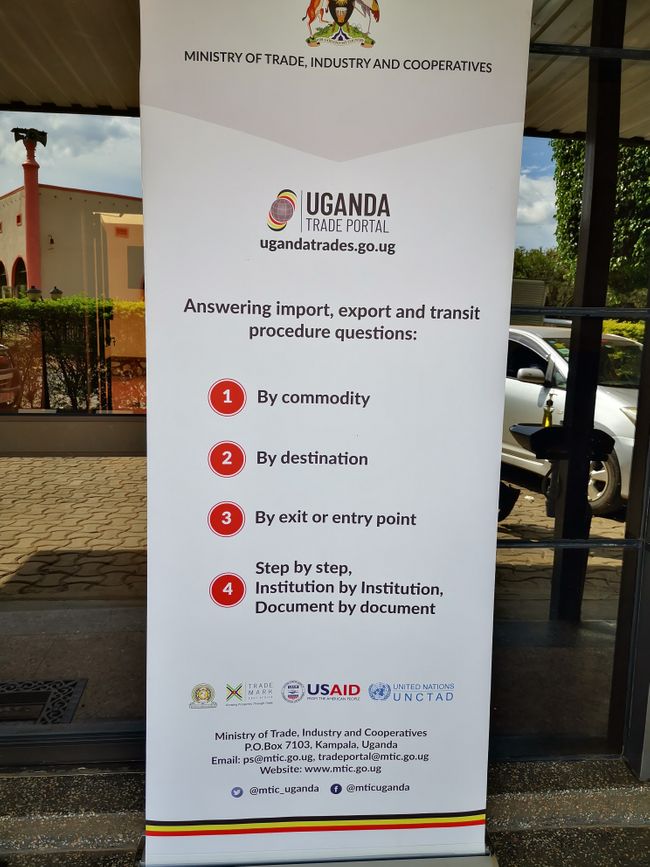
ꯅꯤꯎꯖꯂꯦꯇꯔꯗꯥ ꯁꯕꯁ꯭ꯛꯔꯥꯏꯕ ꯇꯧꯕꯤꯌꯨ꯫
The impressions are overwhelming and I can't keep up with writing. Today we went on an orientation tour to two projects of the Rwenzori Community Vision for Development (RWECO-VIDE)
Both projects are located in the Kyanjuki Kilembe Region, about a 30-minute drive from Kasese. Baluku, who owns a travel agency here, kindly drives us even though he is very busy. Normally you would travel this distance by motorcycle taxi, called 'Boda Boda' (which comes from the English word 'border'). However, helmets are rare and maintaining distance (COVID related) is also not possible. We'll see, maybe I'll dare to do it once I've settled in a bit...
On the way, I see the catastrophic destruction that the flood of the Nyamwamba River caused last year in May during the rainy season. Hundreds of thousands of people in the region were affected and lost their belongings (https://www.humanistisch.net/38492/regenzeit-und-ueberschwemmungen-in-der-covid-19-krise/), and all this in the midst of the COVID pandemic. The pictures give you a small impression of the damage caused by the flood. The flood brought huge masses of rocks, which are now scattered in the landscape.
Ndumbuko, who is an advisor for RWECO-VIDE and the headmaster of the Divine Mercy Primary School, has also lost his house and had to move with his entire family to a much smaller home that has no electricity. He can't afford anything else at the moment. He tells all of this with a smile and when I ask him if it is not very difficult for him and his family, he answers with a lot of confidence 'what to do, life goes on...' We can definitely learn something from this attitude in Germany!
To reach the projects, we pass a barrier. It is a remnant of the past. Copper was mined in the region until the 1970s. When passing it, the workers were checked to make sure they didn't take anything with them. Today, cobalt is still extracted from the waste material of the copper mines, which is mainly used in the production of rechargeable batteries.
Meanwhile, we continue on foot. The landscape is beautiful. The peaks of the Rwenzori Mountains are covered in clouds, coffee is grown on the green terraces at the foot. The people here mainly make a living from agriculture. There is a colorful hustle and bustle: chickens, goats, cows, products from the region, such as palm oil, fruits, and vegetables, are sold at a small marketplace. And children, children everywhere, but mostly the younger ones, as the older ones are in school.
We continue past the Rwenzori Trekking Services station. Here, an Australian set up the first trekking route into the Rwenzori Mountains in the 1990s. Currently, there are two trekking routes starting in Kasese. The network is supposed to be expanded, but there is currently a lack of financial resources for that.
Until recently, I didn't know that the mountains here reach heights of over 5000m and are thus the third highest mountain range in Africa. The flora and fauna are unique, the peaks are snow-covered, and there are even glaciers. The Rwenzori Mountains are located on the border between Uganda and the Democratic Republic of Congo. They are part of the UNESCO World Heritage. The highest peak is Margherita Peak with 5109 meters. As you can imagine, trekking tours in such a region are very demanding and only suitable for people with exceptionally good physical condition. A complete tour to Margherita Peak takes 8 to 9 days, Musuri, a guide we meet along the way, tells me. Percentage-wise, German tourists are actually the most represented here, Musuri continues. Everyone hopes that the guests will return soon because tourism is an important source of income, albeit currently at a very low level.
Then we visit the Divine Mercy Primary School and are warmly welcomed.
At the entrance, one of the students disinfects our hands and measures our body temperature. The time of our visit is also diligently recorded so that contact tracing is possible.
The school normally accommodates 360 children, but currently, due to COVID, only 93 are attending. They have divided them into different classes. Currently, the younger and older ones are at home. The special thing is that orphans and children who still have their parents go to school here. For the orphans, school attendance is free, while others pay a manageable school fee for a private school. Ndumbuko points out to me that there is no cultural reason why some children don't wear shoes; they simply can't afford them, and that applies not only to orphans.
After the flood last year, some aid organizations were briefly on site. World Vision, for example, left two water tanks and a solar-powered lamp at the school.
As a farewell gift, the children give me a picture that they made especially for me. What a wonderful stay!
Next, we visit the YVCO Bulembia Child Development Center. Here, orphaned children and children with special needs between the ages of 3 and 25 are cared for during the day. Afterwards, their foster families, who volunteer for this task, take over. In return, the foster families are trained by the organization in childcare and sensitized to the needs of the children, knowledge that also benefits their own children. In most cases, the foster families are relatives from the extended family.
Currently, YVCO takes care of 160 orphaned children who are accepted here without discrimination based on gender, religion, origin, etc.
There are many orphaned children in Uganda who have lost at least one parent to diseases such as malaria, HIV/AIDS, etc. Maternal mortality is also very high. 16 women die during childbirth every day.
Unfortunately, these orphaned children are often exploited by their relatives who are supposed to take care of them - they are used to earn money, physically, mentally, and emotionally abused. As a result, they run away from their foster families and end up on the streets, where their situation does not improve. The YVCO Bulembia Child Development Center aims to sustainably improve this situation through its activities, for example by taking care of school fees and school supplies and providing for basic needs. YVCO receives requests every day to admit children.
Some foster parents are invited to a meeting at YVCO today. Godfrey, who is himself an orphan, leads the meeting, and I am also asked to give a short speech. At just 29 years old, he manages the center and studies in the evening to get his high school diploma. In addition, he is involved in the umbrella organization RWECO-VIDE as one of the directors. He barely has time to meet friends or engage in other leisure activities. I admire his enthusiasm and passion for the project!
On the drive back to Kasese, we make a stop at the former marketplace and former trading center of Kasese District. The market was burned down by the Lord's Resistance Army (https://en.wikipedia.org/wiki/Lord%27s_Resistance_Army) during the civil war in the late 1980s. The government has promised multiple times to rebuild it, but so far without any result. Today, only a small part of the market remains with makeshift stalls made of corrugated iron.
Our last stop takes us to Bwambale's former primary school, where we also meet one of his former teachers.
Baluku bought me a whole bag of fruit with mangoes and passion fruits, and Ndumbuko bought bananas. I have them make me a delicious fruit plate for dinner.
ꯅꯤꯎꯖꯂꯦꯇꯔꯗꯥ ꯁꯕꯁ꯭ꯛꯔꯥꯏꯕ ꯇꯧꯕꯤꯌꯨ꯫
ꯄꯥꯎꯈꯨꯝ
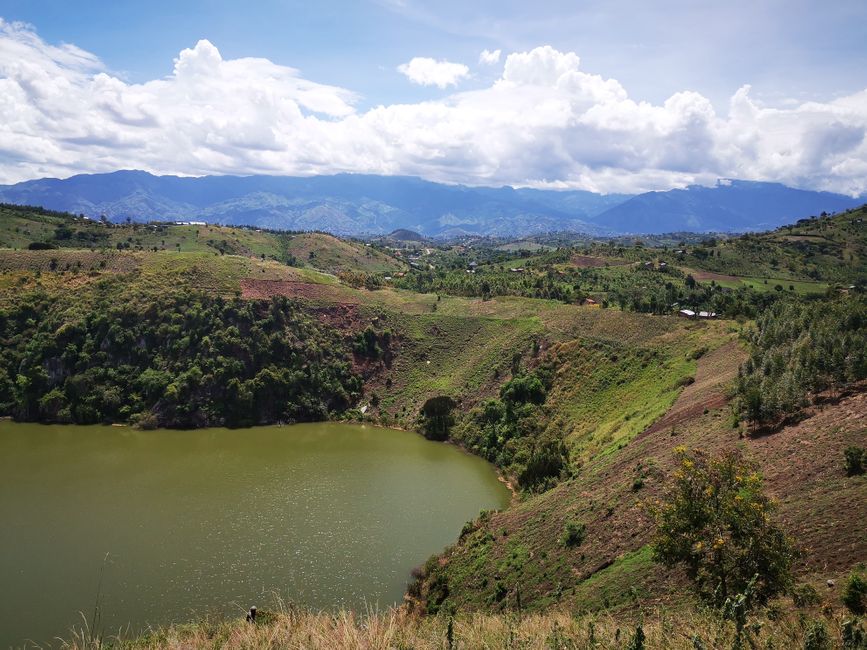
ꯆꯠꯊꯣꯛ-ꯆꯠꯁꯤꯅꯒꯤ ꯔꯤꯄꯣꯔꯇꯁꯤꯡ ꯎꯒꯥꯟꯗꯥ꯫

